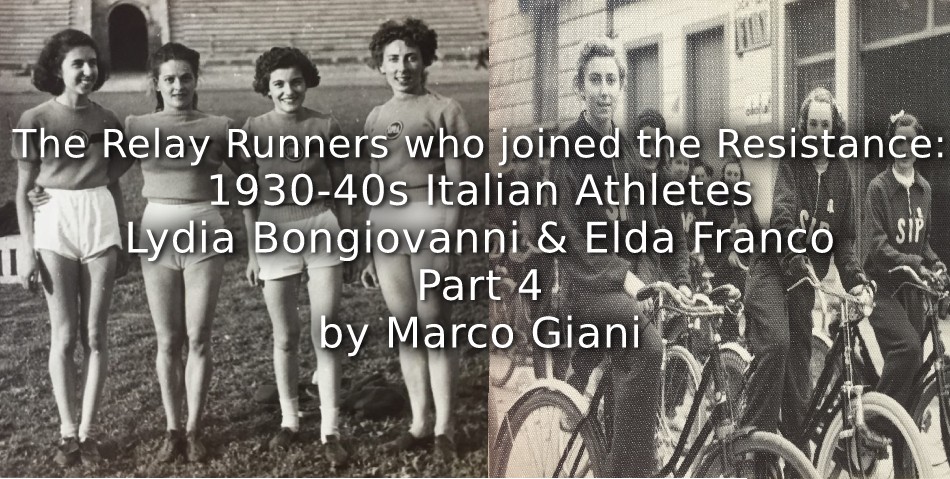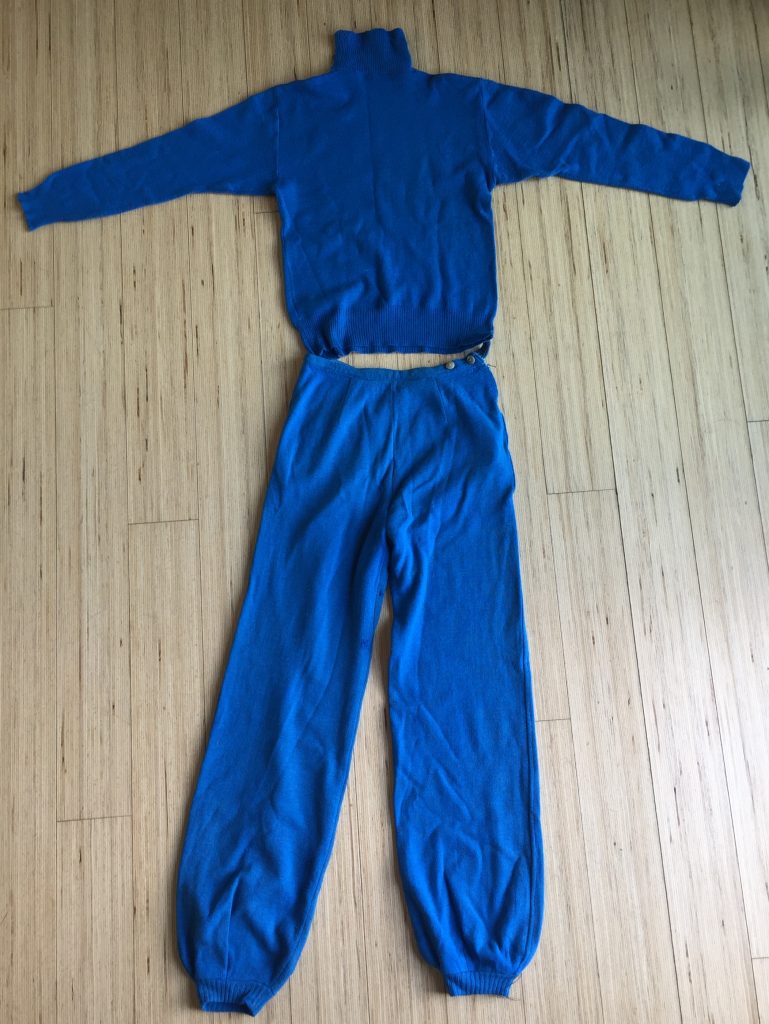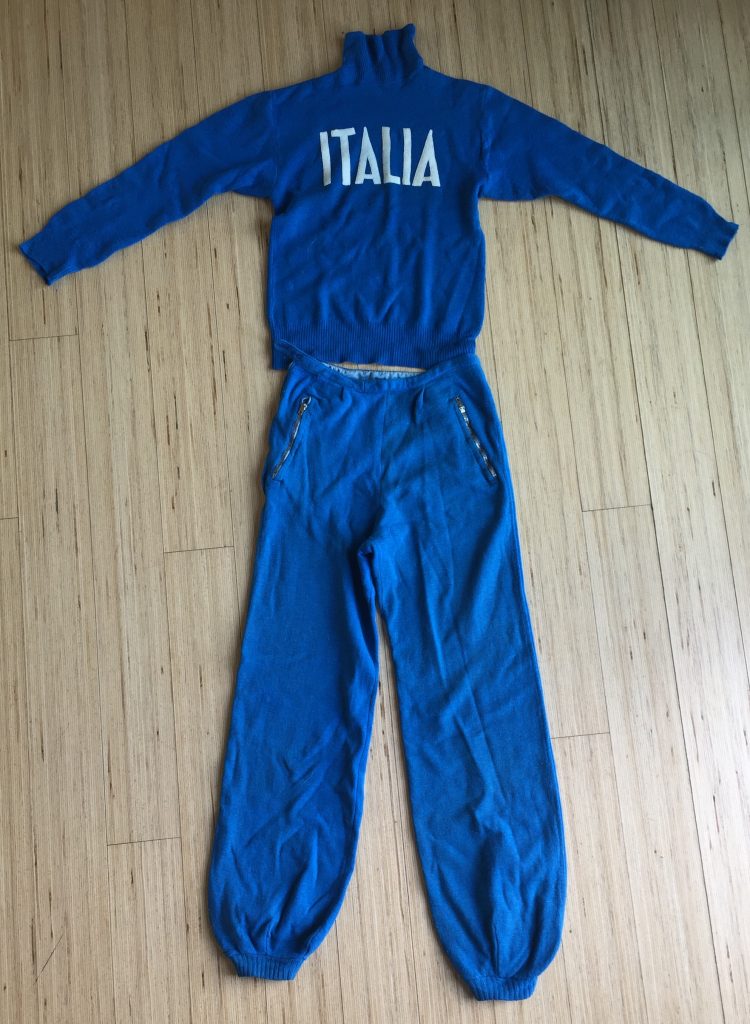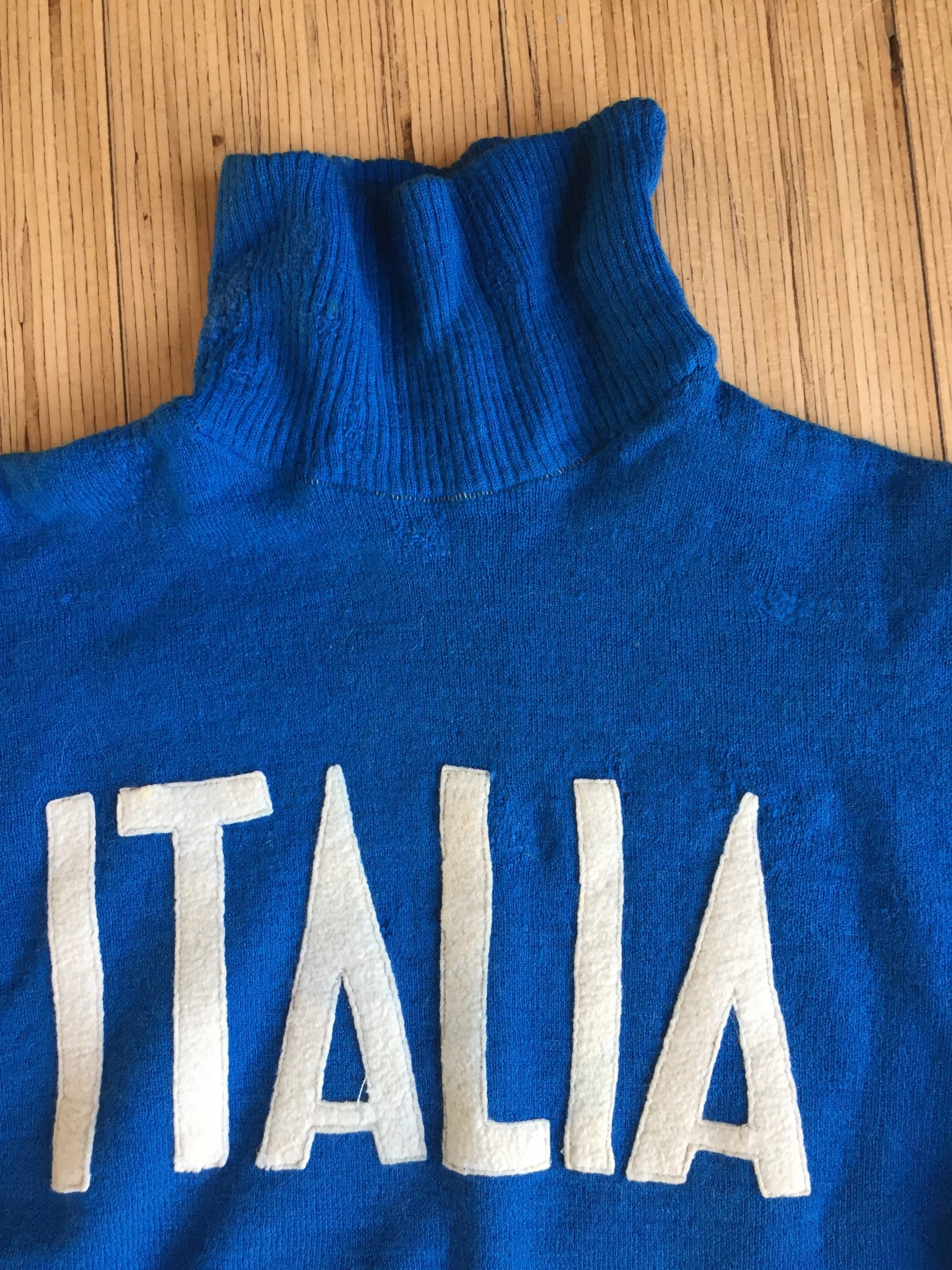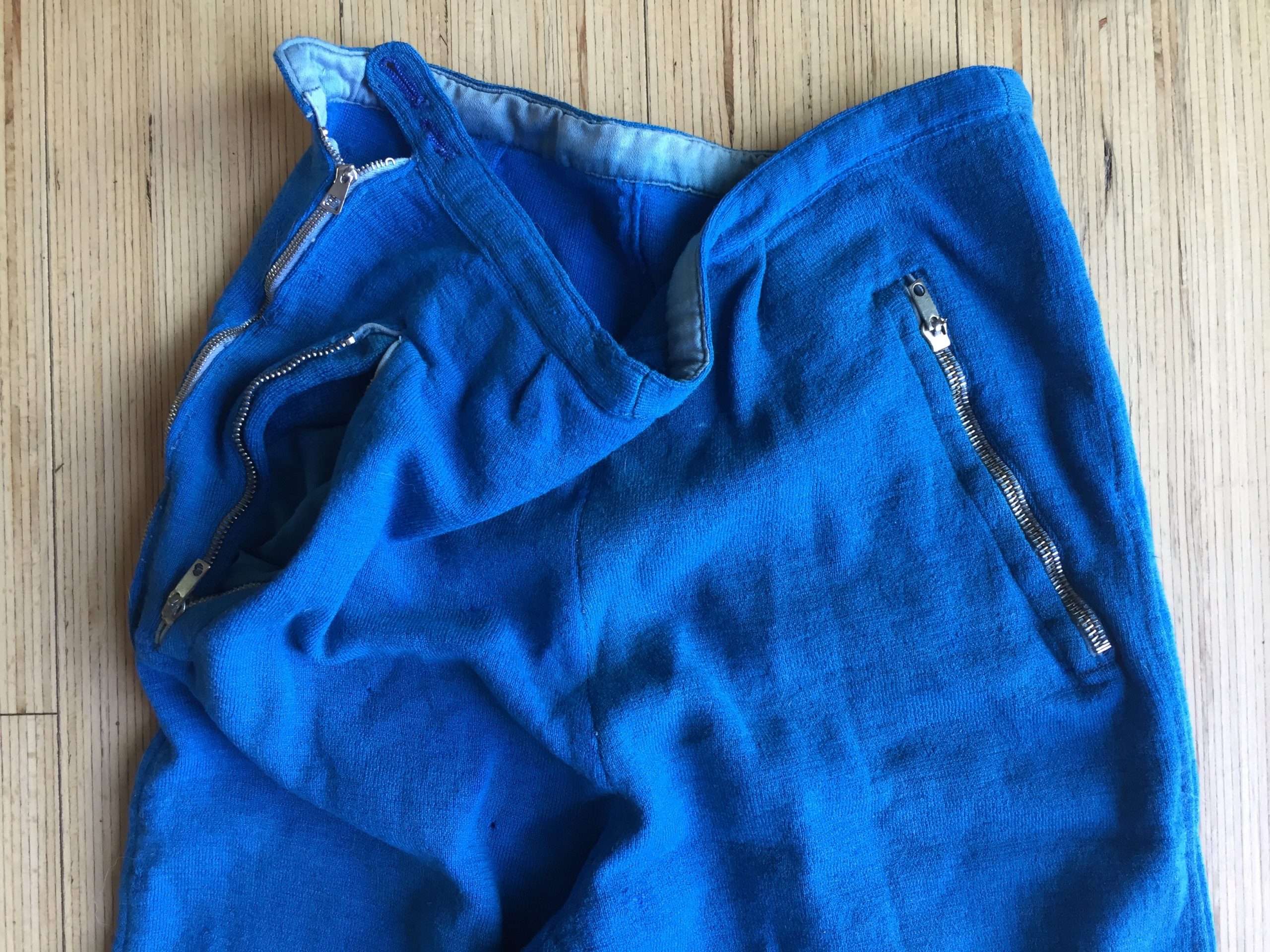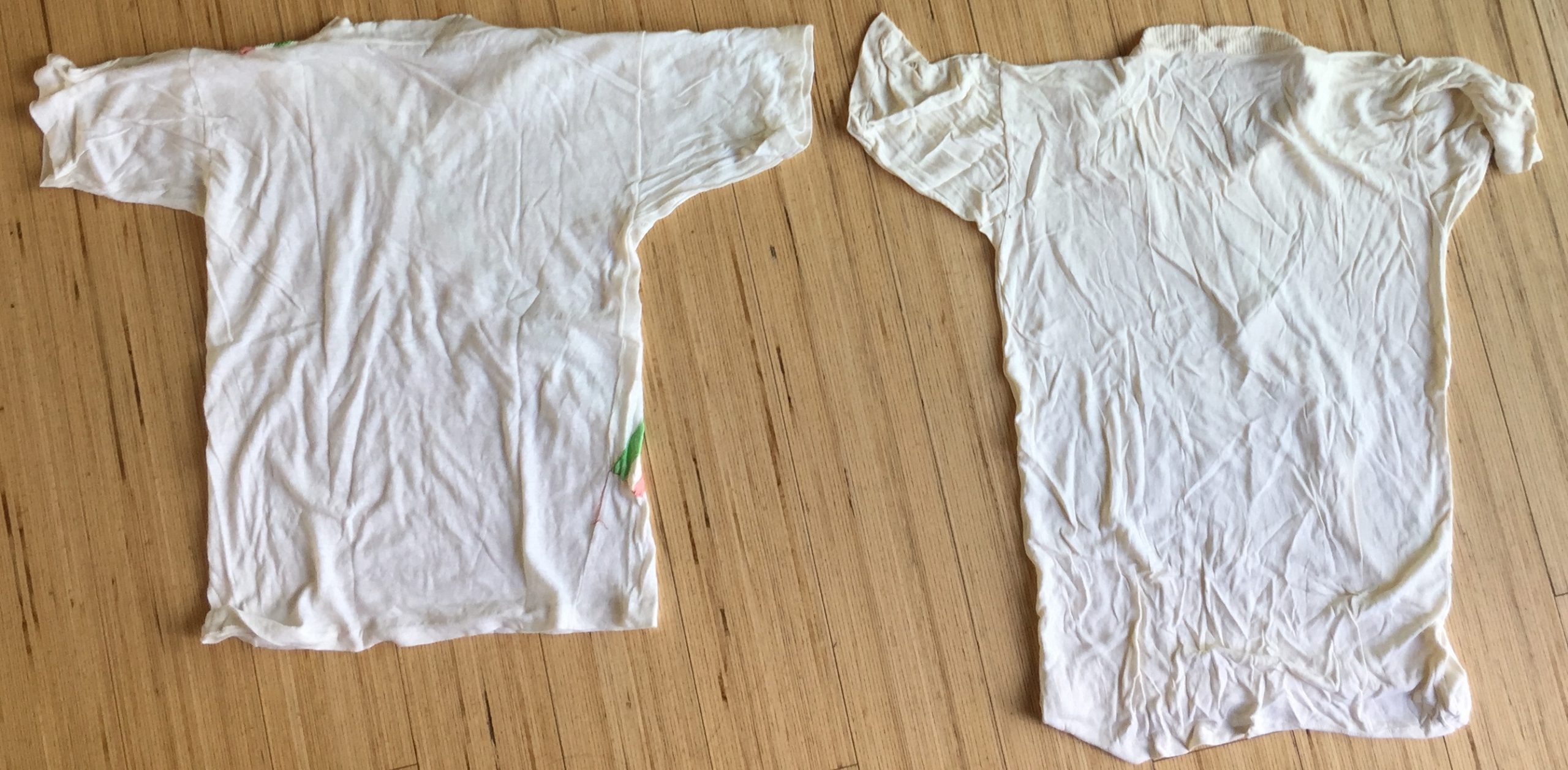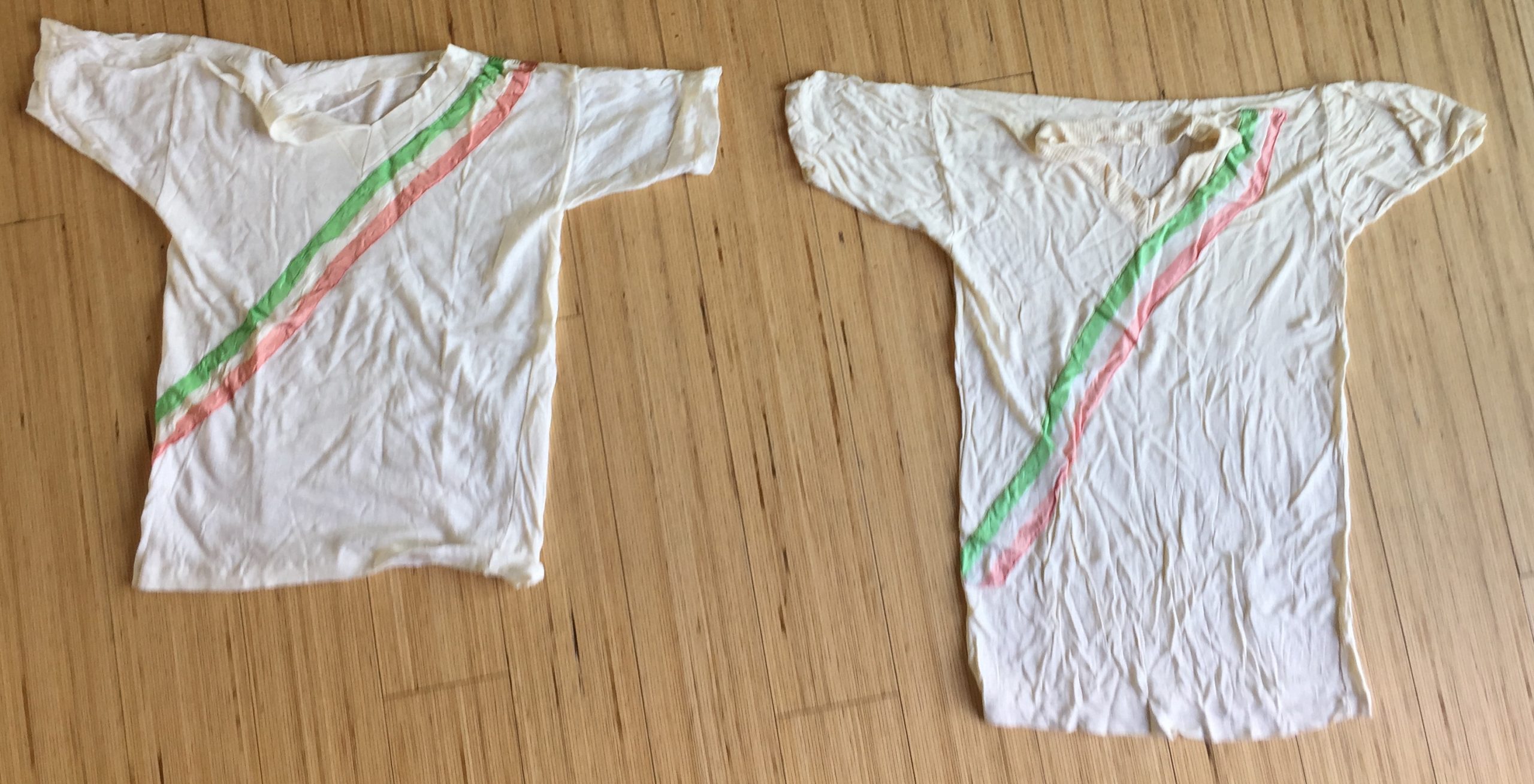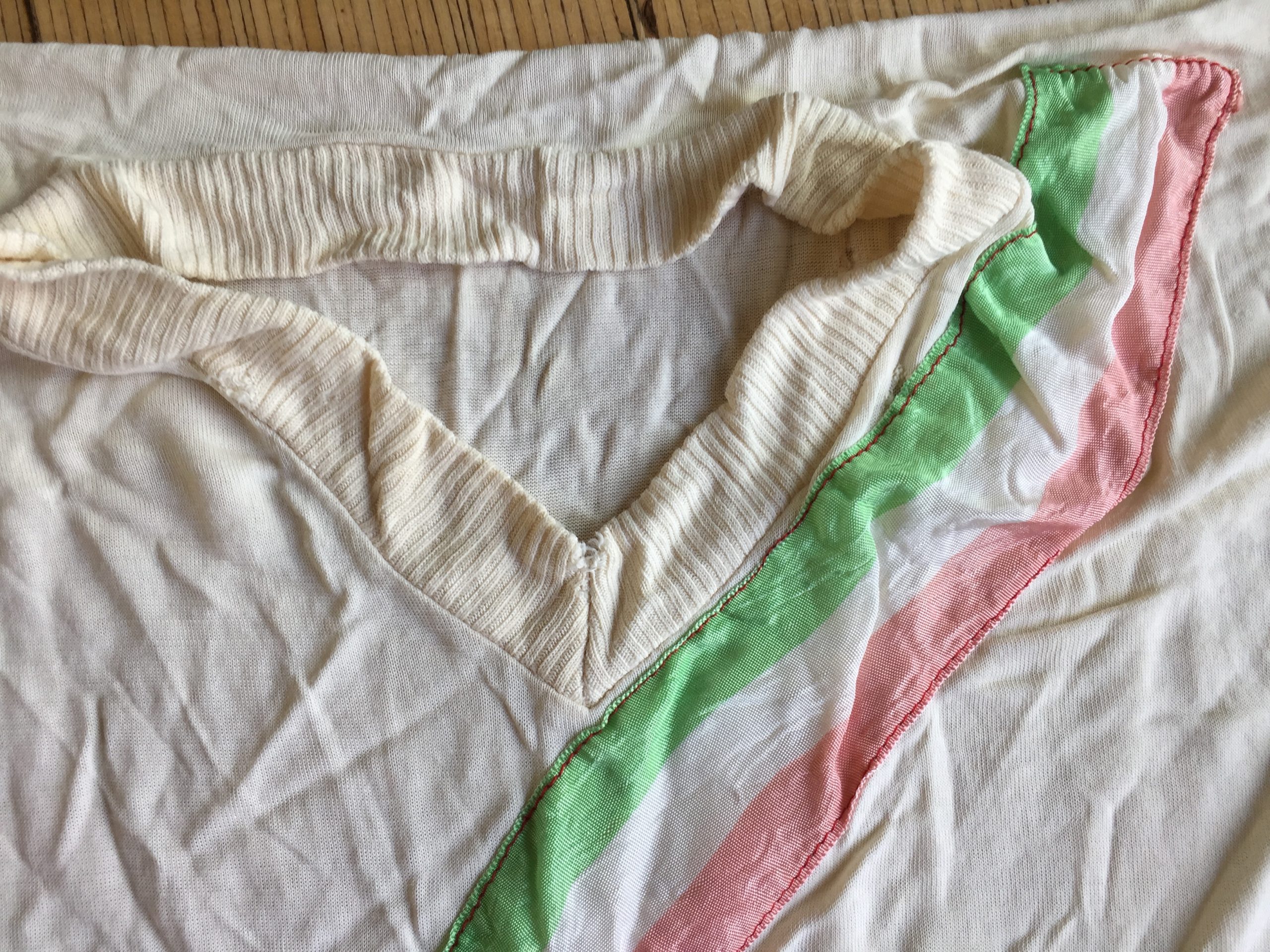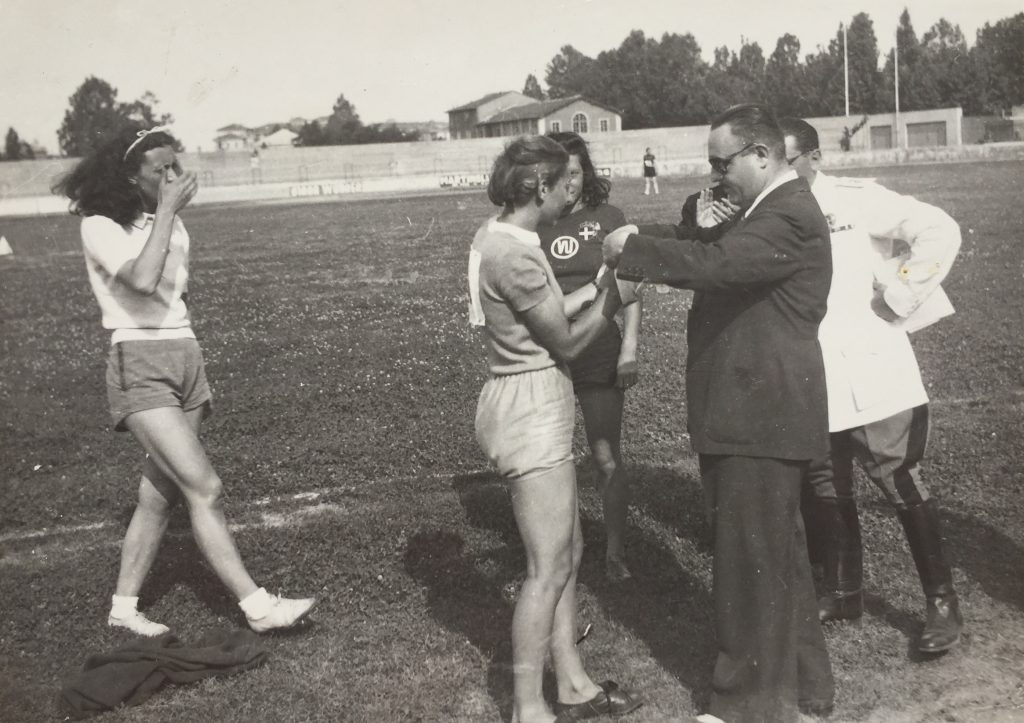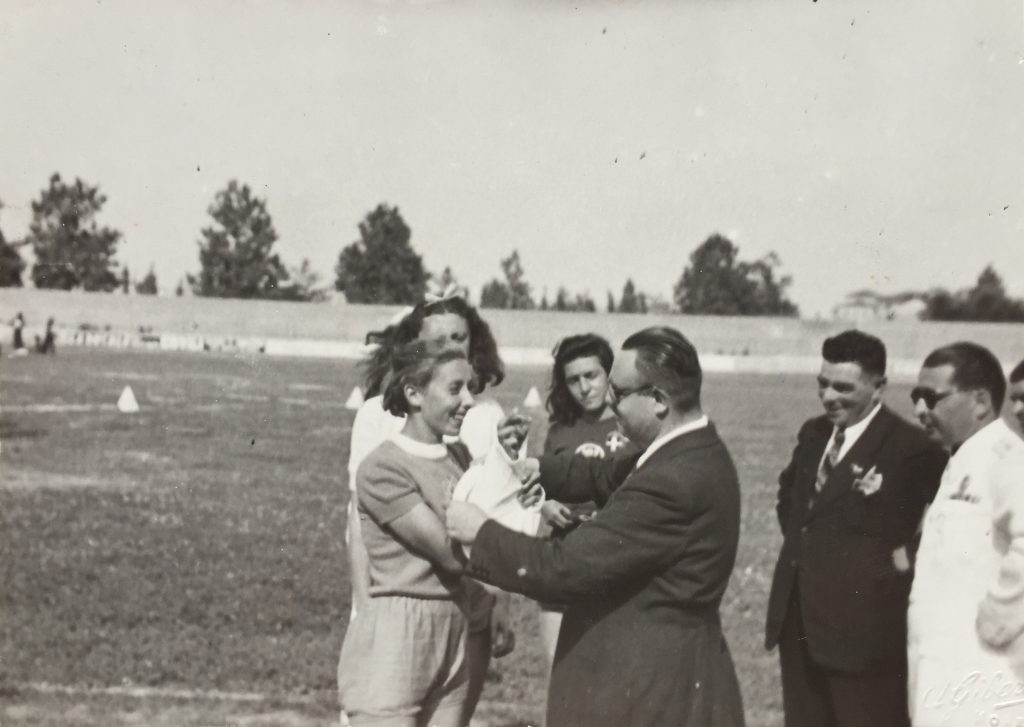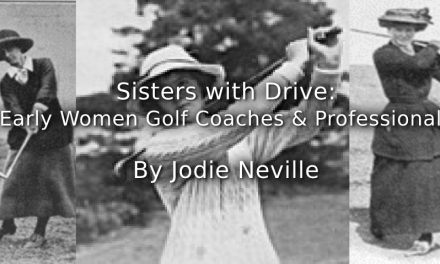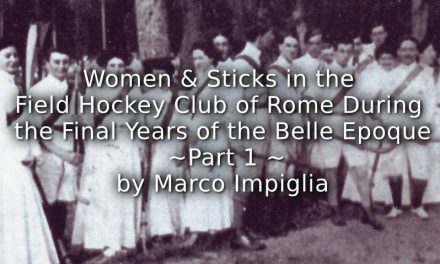The author would like to express thanks to Maura Quiriconi for having shared the personal archive of her mother, from which all pictures published in this article are taken (except for where indicated).
PLEASE NOTE – Express permission is required to reproduce ANY of the images of this article – please contact Playing Pasts or the author for more details.
To Read Part 1 Click HERE ,Part 2 Click HERE and Part 3 Click HERE
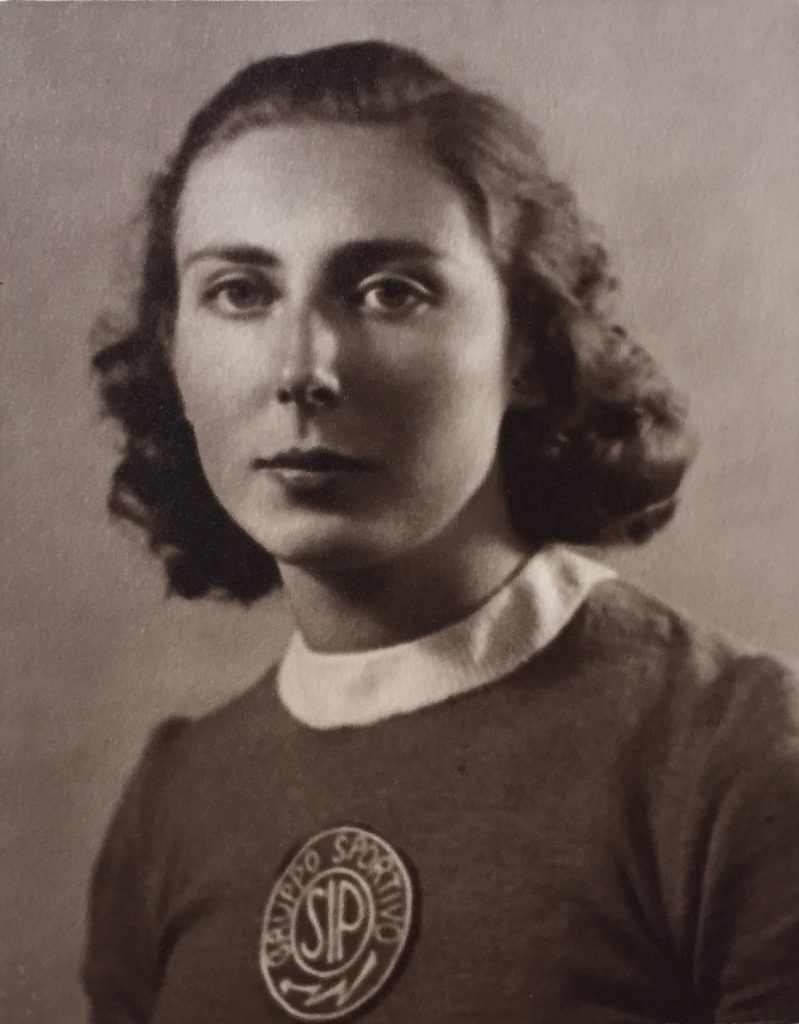
Elda Franco’s photo portrait (May 1942).
Due to the pandemic emergency of the last months, the first part of my research on Lydia Bongiovanni and Elda Franco, that Playing Pasts’ readers already know thanks to the first 3 parts of this series, was done remotely: which is quite problematic, since both Lydia and Elda were from Turin. So last week I phoned Maura Quiriconi, who had already shared with me her memories about her mother’s career, asking her if I could see in person all the interesting stuff she had showed me via her smartphone. So I travelled to the little village in the Monferrato hills where Elda spent her last years, and … as usual, historical treasures were waiting for me, AND even more than I expected.
As all we know, women’s sports memorabilia are more endangered than men’s ones: generally, families underestimate their mother or granny’s photographs, letters, diaries, clippings, judging them as not worthy of being preserved. You know, history is made by men, not by women … But there are material objects that are even more endangered because most of us are taught in school that a letter or a cup are historical artifacts, but here I’m talking about sportswear: who would think to preserve items like old shoes, shirts, shorts, tracksuits? They take up space, they need specific conservation and above all they are useless. Thankfully, Maura didn’t think so about her mother’s tracksuit.
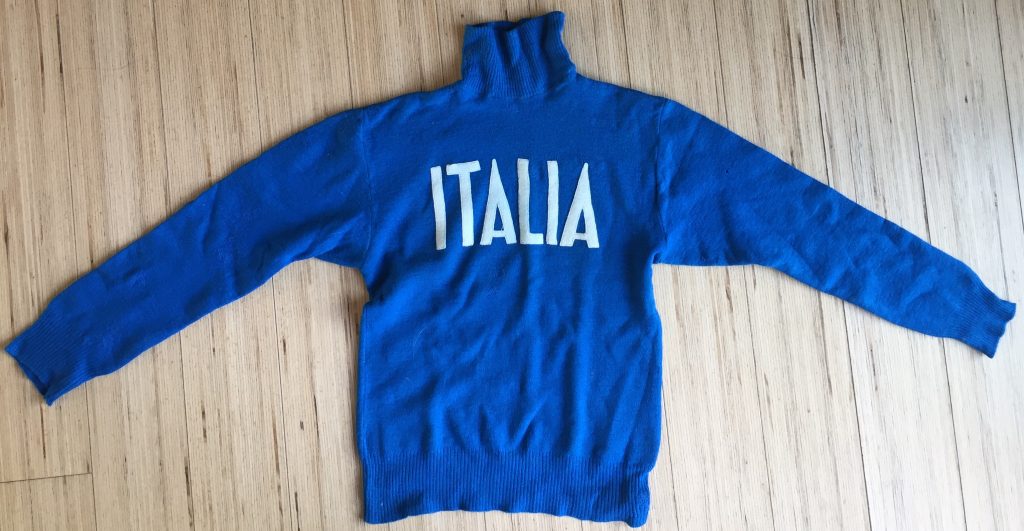
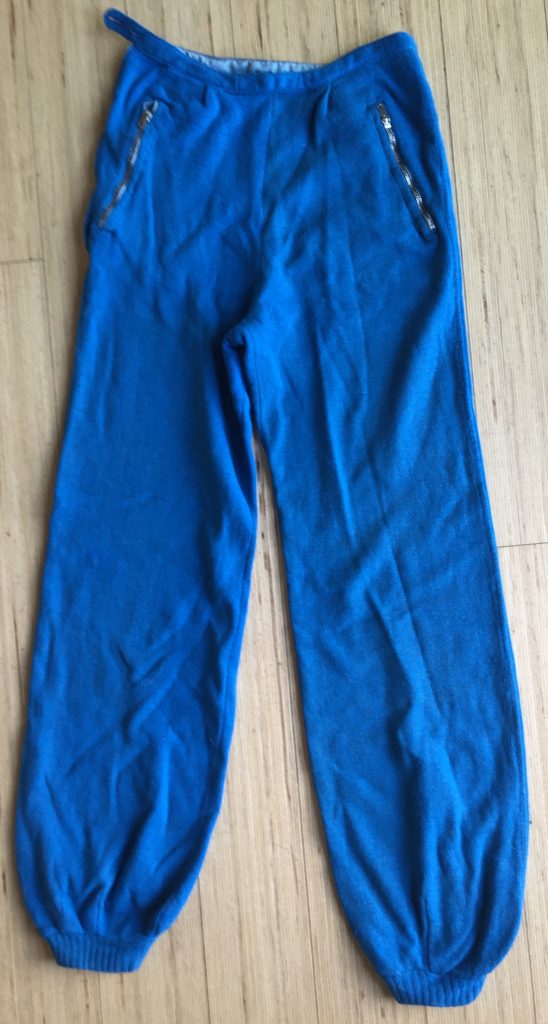
This small tracksuit (Elda was approximately five foot three high) was the one worn by the Italy National team athletes between 1942 and 1946, as proven by the photos persevered in Elda’s archive.
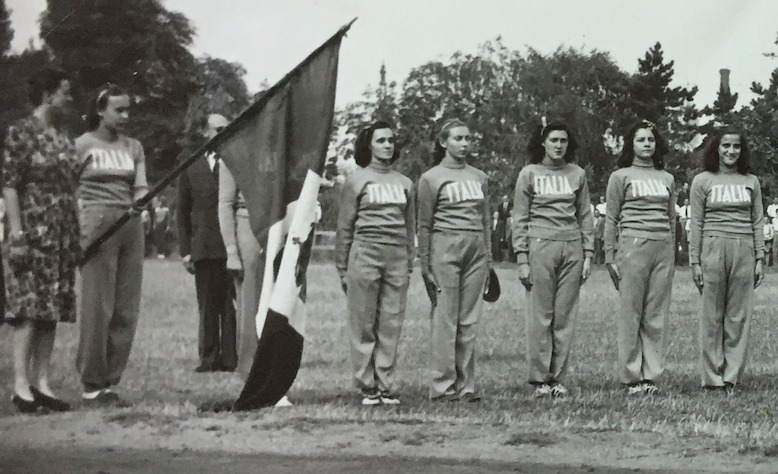
Italian athletes during the inaugural ceremony of Hungary – Italy women’s athletics meeting (Budapest, 19/07/1942).
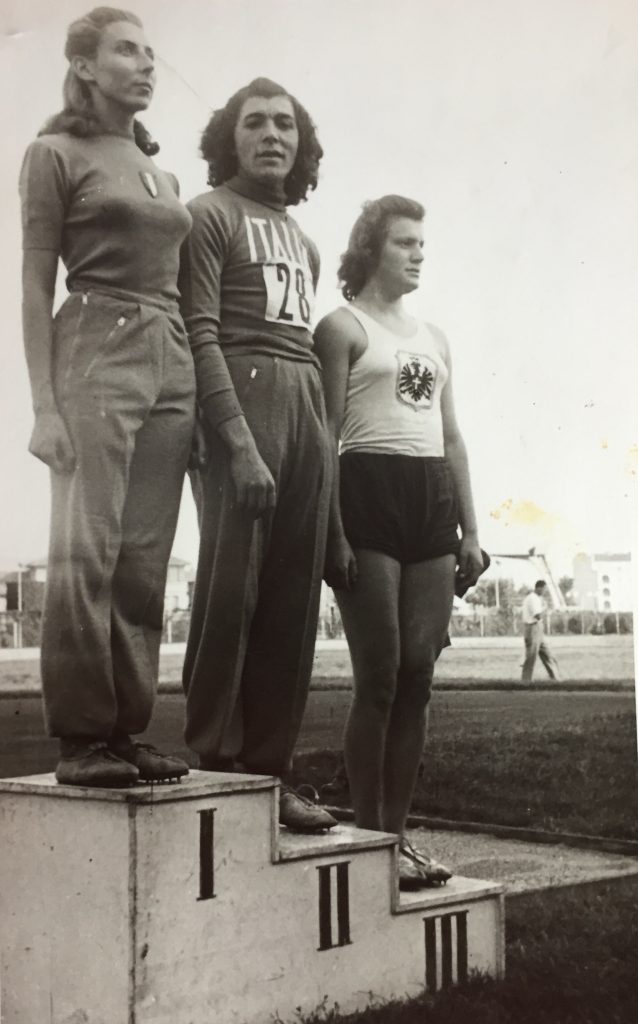
The winners of long jump event at the Italy – Austria women’s athletics meeting (Turin, 15/09/1946)
1st is Elda, 2nd Amelia Piccinini and 3rd Steinegger
Elda is wearing the light-blue shirt, which is a little less controversial than the sleeveless white shirt of her Austrian opponent.
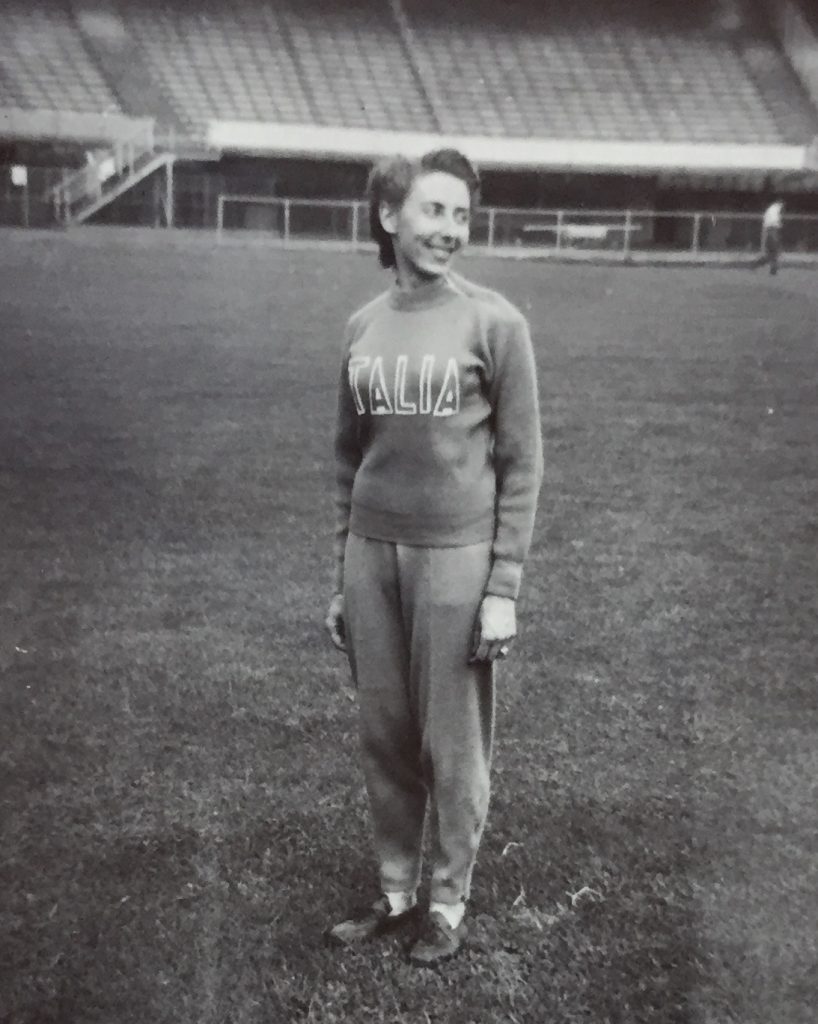
Elda during the Netherlands – Italy meeting in Rotterdam (24/07/1949)
Please note that ‘ITALY’ has now changed font.
The tracksuit is well persevered: I guess sports fashion historians can fully appreciate elements such as internal seams, external buttons, lateral zippers …
There are two further items that are even more endangered, since at a first glance they don’t look very important at all, or even perhaps very well kept items.
But every scholar of the Fascist era Italian women’s sports know that these 2 white shirts, emcompssed by an Italian tricolore, are not normal shirts: although they are very simple, they were the Italian Champion uniforms, and only the female or male winner of the annual competitions could wear them!
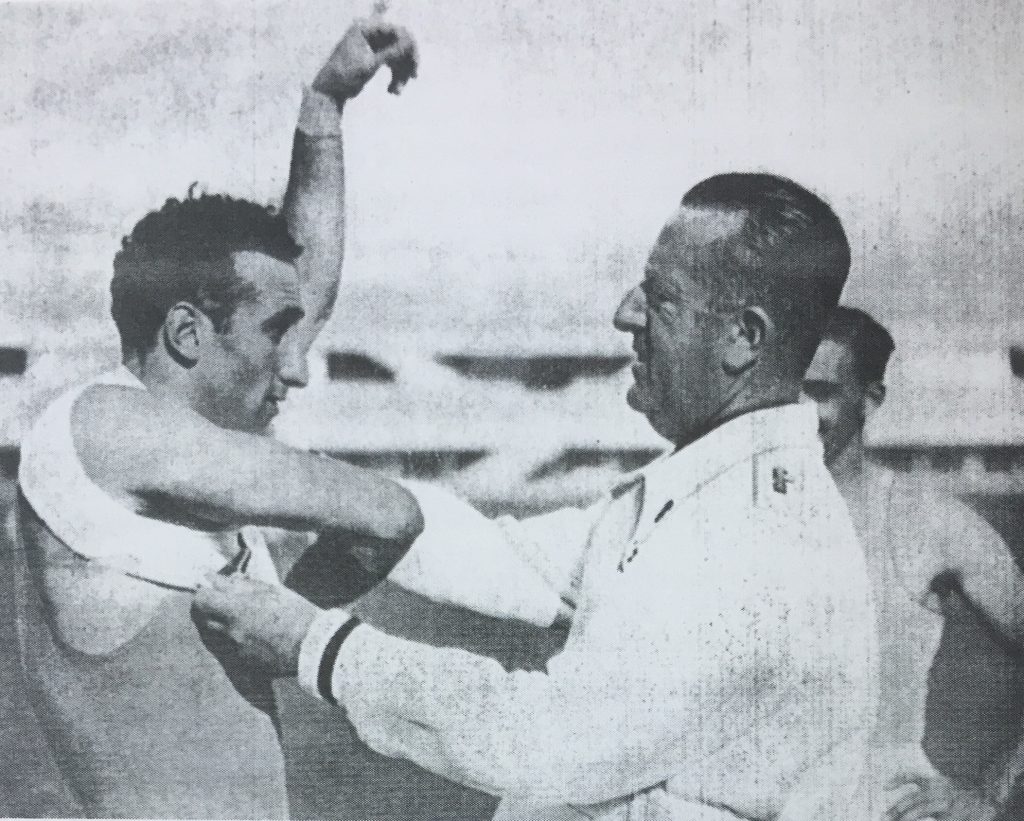
The FIDAL president Luigi Ridolfi presenting the pole vaulter Mario Romeo with a champions shirt
Source: ASAI Bonomelli,Storia dei campionati italiani di atletica leggera, vol. 8, , p. 112.
-
Elda is wearing the Champion shirt just after her victory in the 80m hurdles at the 1941 National Championship in Modena
Behind her, the2nd placed Adele Tomatis (Venchi Unica Torino); on the left, Ondina Valla (SS Parioli Roma)
-
Elda the 1941 National Champion, with some managers; at the back, another Italian Champion
Since the neck of the shirt worn by Elda seems to be veryplain, it might be the first of those preserved.
The photographs preserved in the family albums puts a face to some of the names in Elda’s biography. Firstly, her parents, the motorcycle enthusiast Damiano Franco and her French wife Assunta Lambert.
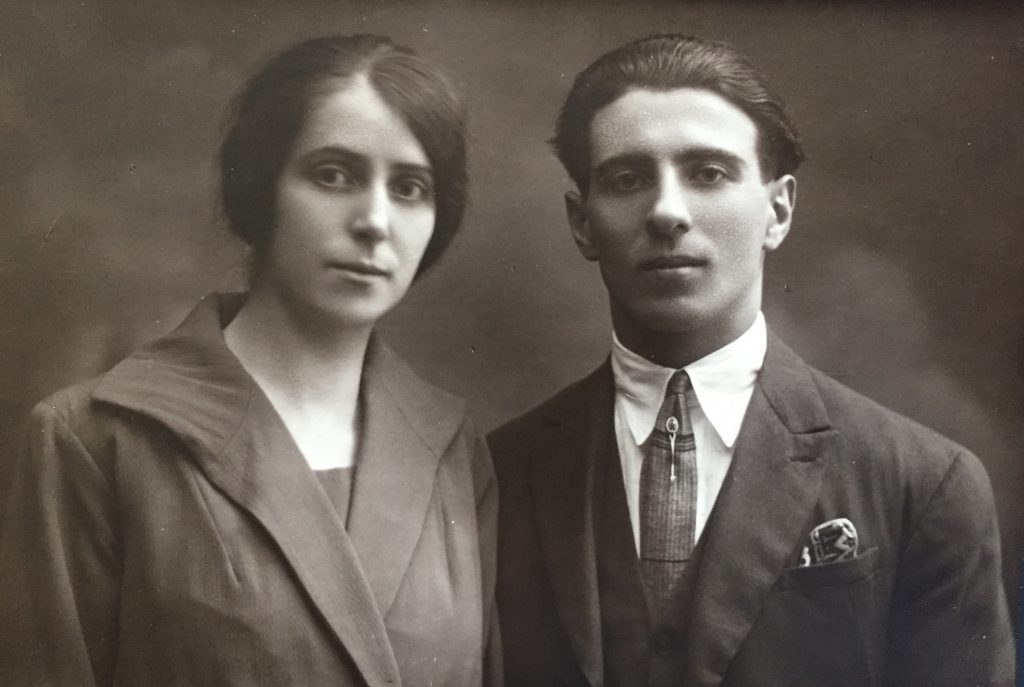
Assunta Lambert and Damiano Franco
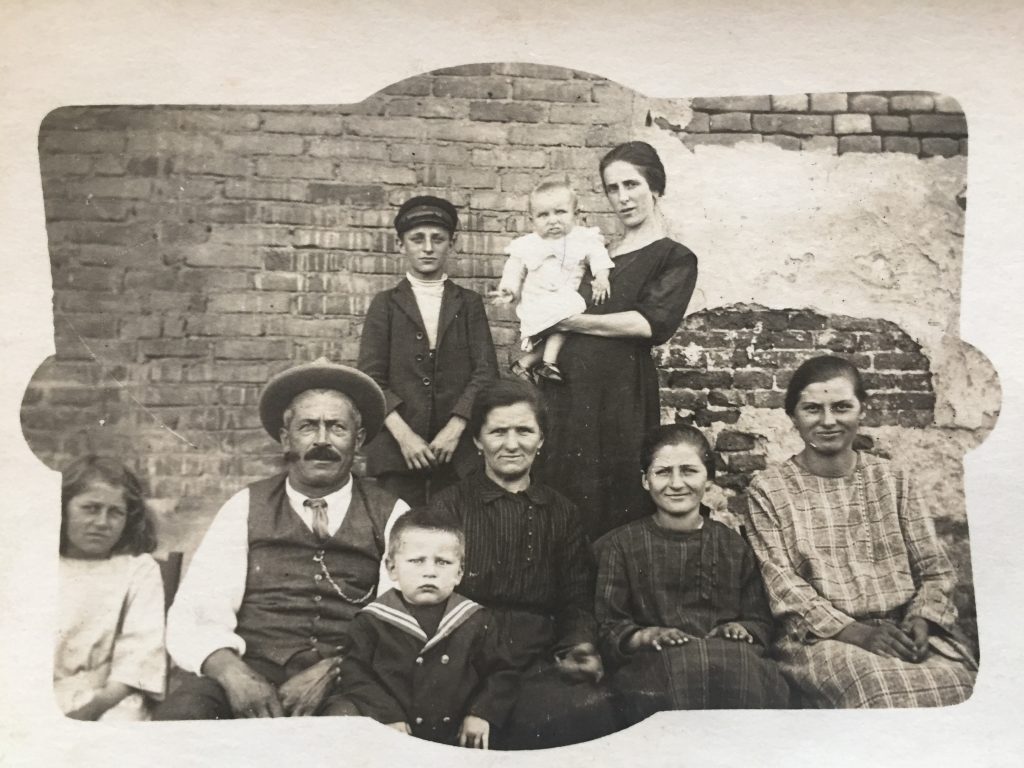
Assunta Lambert (holding Elda) with her French relatives
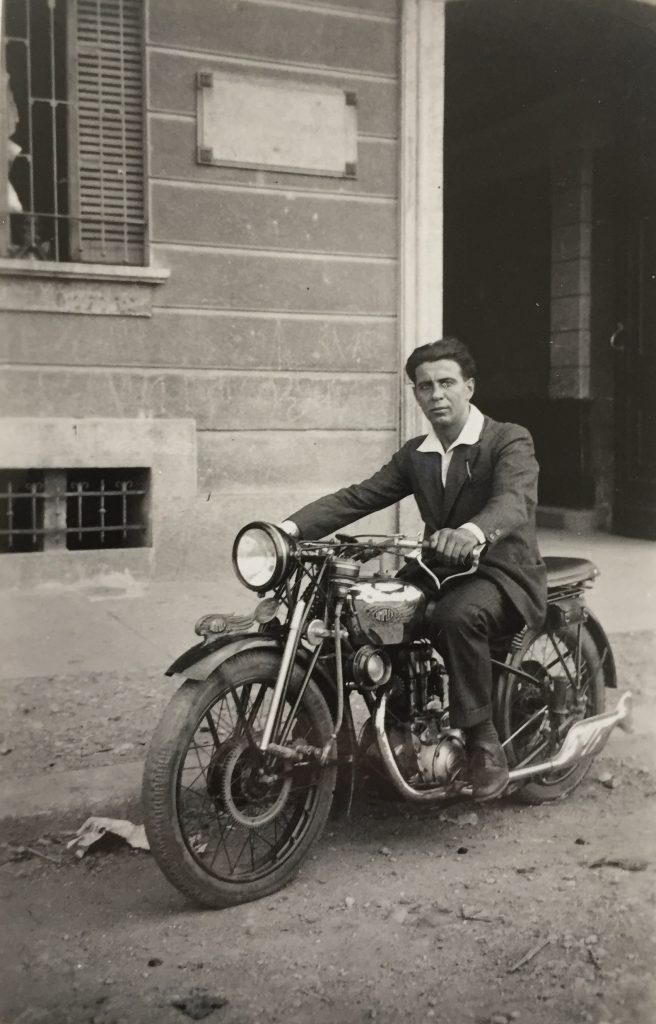
Damiano Franco on his motorcycle
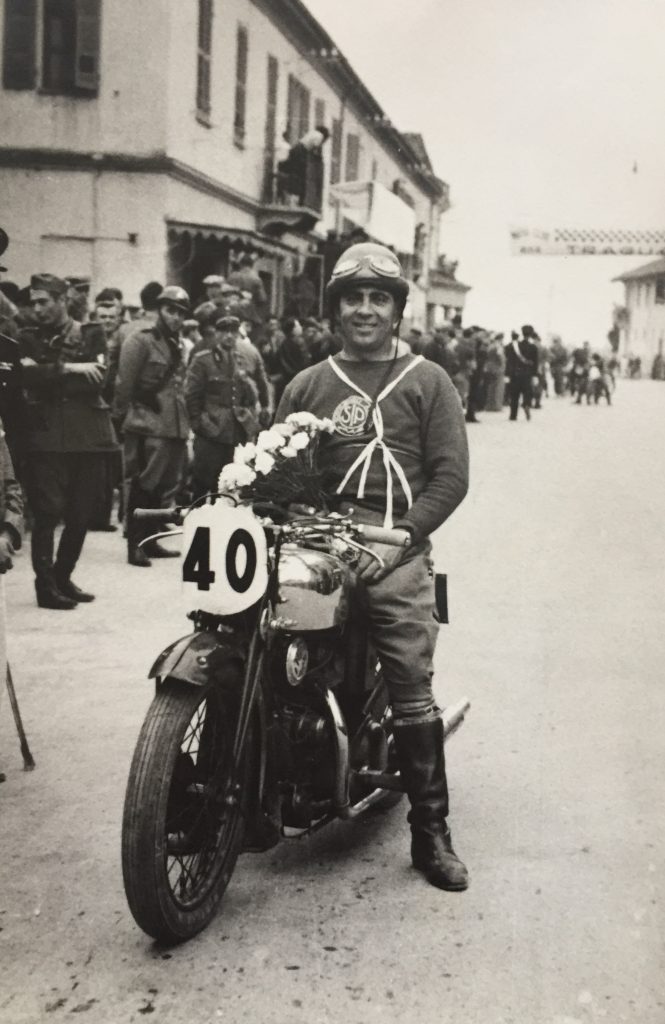
Damiano Franco during a motorcycle race: he’s wearing the SIP uniform.
Maura already told me that Damiano taught her little daughter to ride his motorcycle: I was quite sceptical, until I saw a pair of photos …
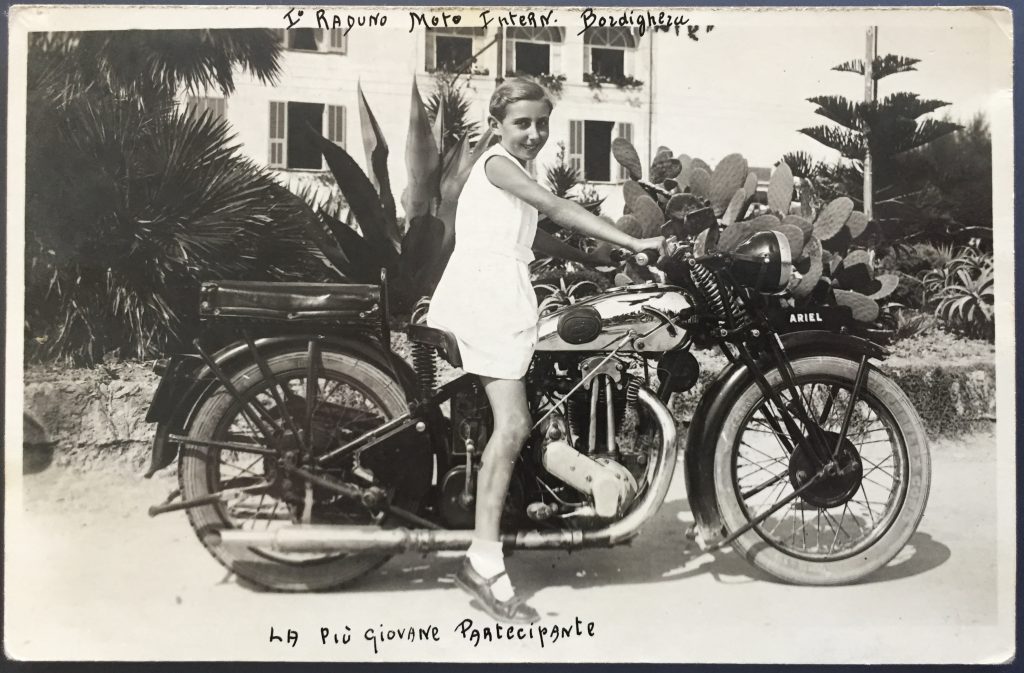
The photo was taken on August, 18th 1935, during a motorcycle rally in Bordighera: Elda was only 11 and a half-years old!
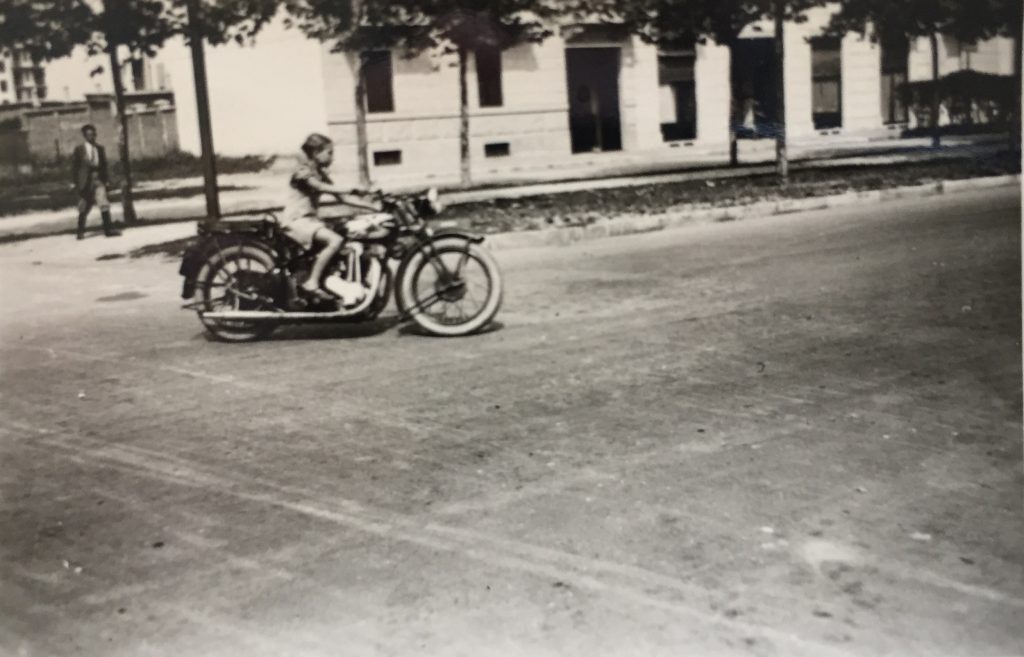
Here, Elda is really riding her father’s motorcycle – hopefully, just for a ride … The photo was taken on August, 20th 1935.
Then, 3 photos show us Elda in a schoolyard with some GIL mates – GIL was the new Fascist Youth association which in 1937 replace the old ONB (see https://bit.ly/2Vwtzjc ).
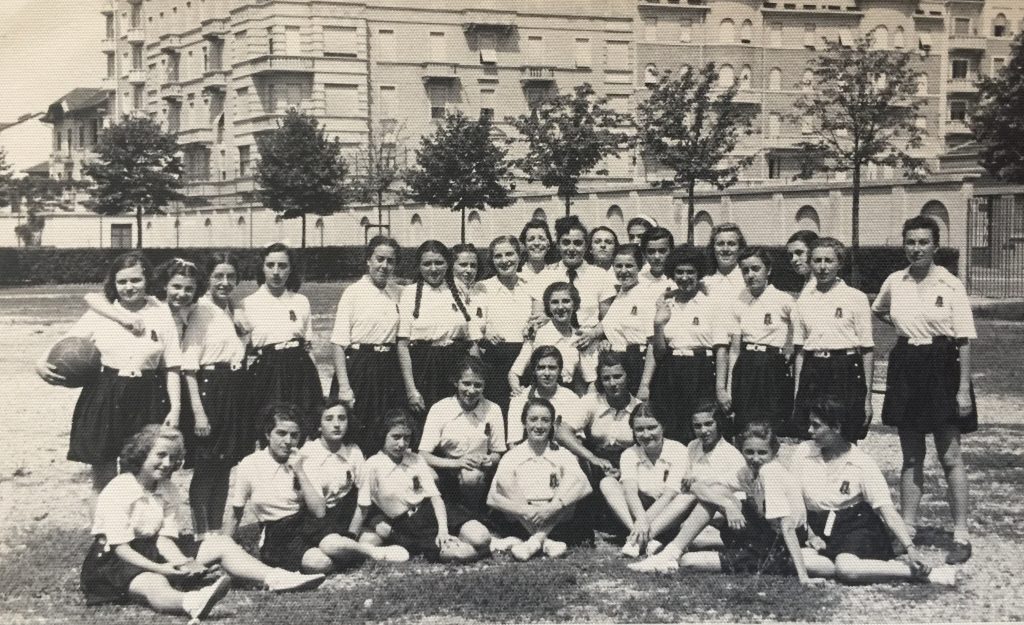
Elda (standing 2nd from the right) with her GIL team-mates
The ball held by the player standing on the left is a basketball, this game was very popular among the Giovani Italiane.
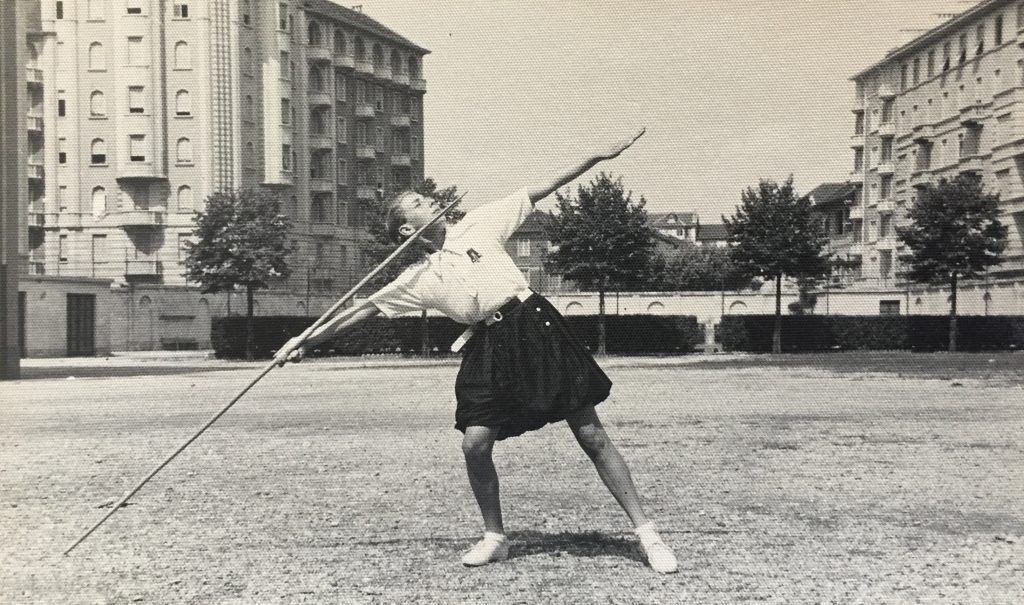
Elda throwing a javelin
As you can see from this gallery (https://twitter.com/calciatrici1933/status/1067111782551101441 ), this pose was very popular with the Italian press of that period, as iconic of feminine sporting grace.
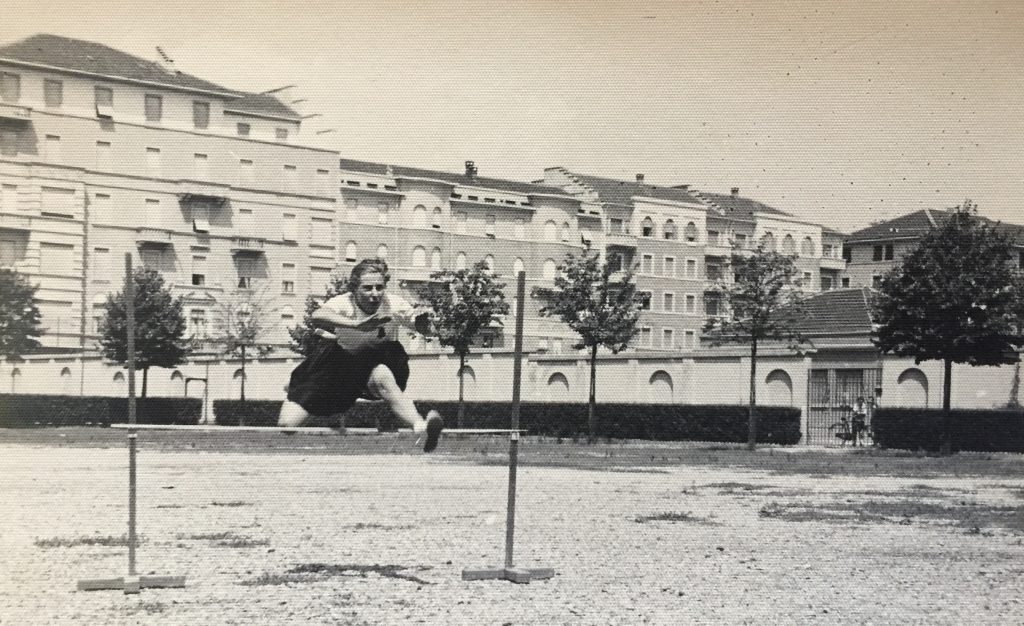
Elda hurdling. As you can see, she’s wearing a puffy black sottana-culottes, not shorts (see https://bit.ly/2Vwtzjc ).
These first items and photographs were only a taste: the real historical treasures preserved by Maura are made up of another 4 major items.
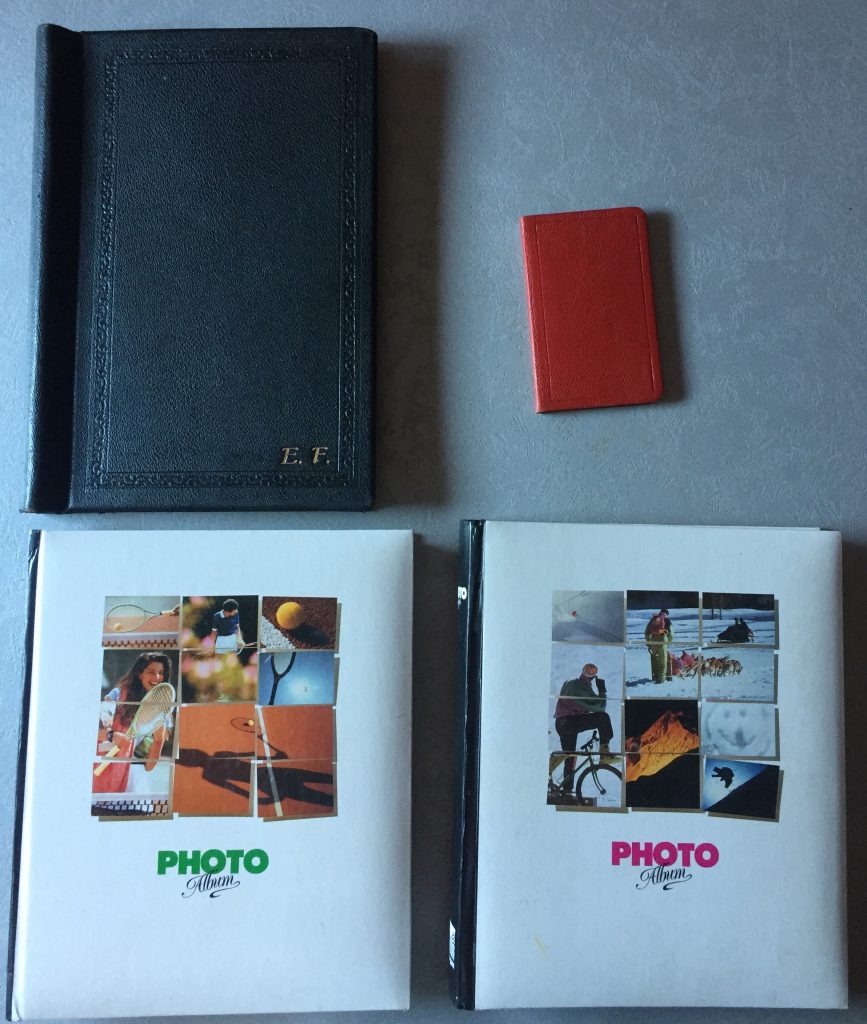
The Black Notebook, the Red Notebook, the 2 Photo Albums.
The first, a little red notebook, in which Elda, who had graduated in accounting and worked as a clerk, recorded every athletics competition she competed in, from October, 4th 1936 to August 7th 1949.
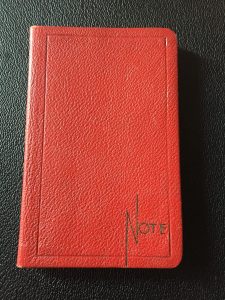
The cover of the red notebook

Some statistics from all the competitions Elda recorded in the red notebook
Please note the lack of international competitions from 1943 to 1945 due to war and the increasing international engagement in the very last years of Elda’s career
The second is a black notebook, signed ‘E’ and ‘F’: as in Rosetta’s football notebook (see http://bit.ly/3y6vUj4 ), it contains glued clippings. Elda chose just some of them (further clipping are gathered between the cover and the first page), posing them in chronological order, from 1937 to 1949: unluckily, she didn’t record the sources, which seems to be various sports newspaper such as La Gazzetta dello Sport, Tuttosport and Stadio.
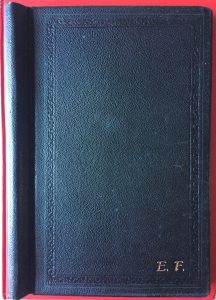
The Black Notebook cover.
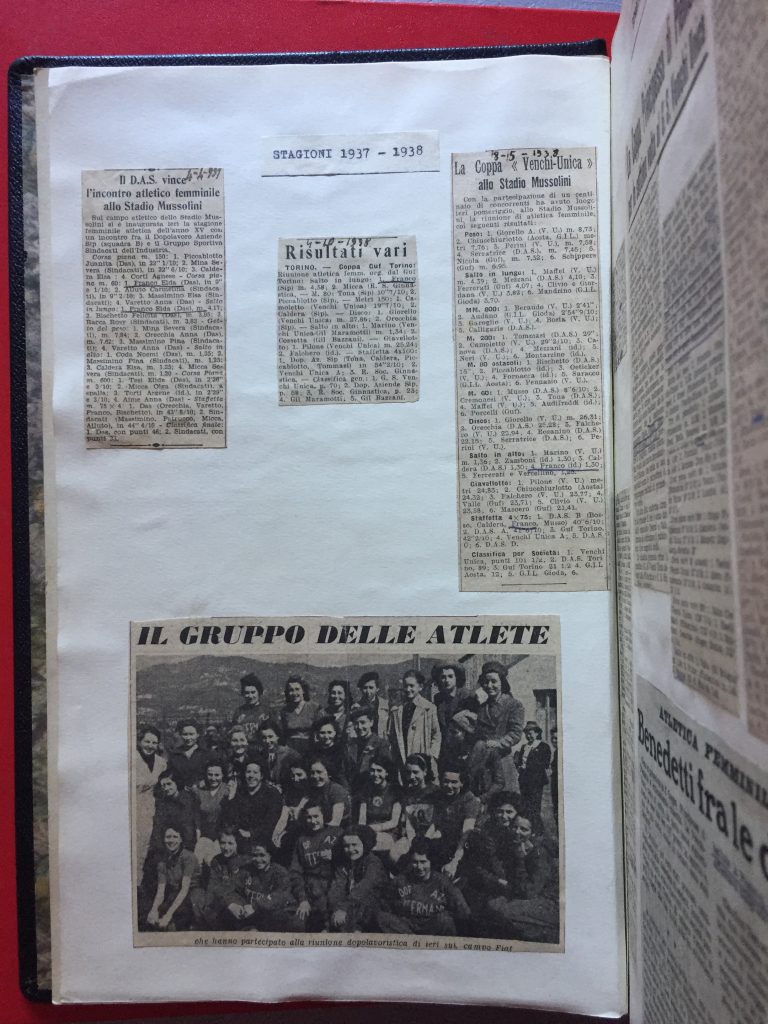
The Black Notebook, p. 2.
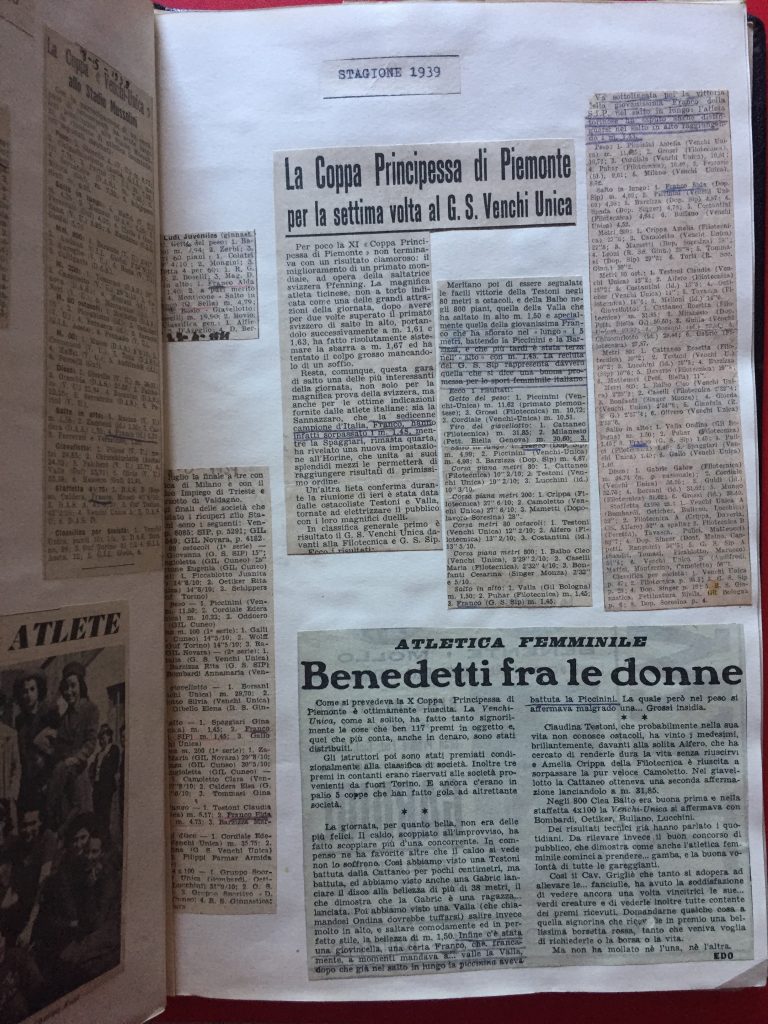
The Black Notebook, p. 3.
Unlike Rosetta Boccalini (see http://bit.ly/3y6vUj4 ), Elda used to underlined each times a journalist wrote about her; sometimes she selected only the paragraph about her, throwing away the rest of the article …
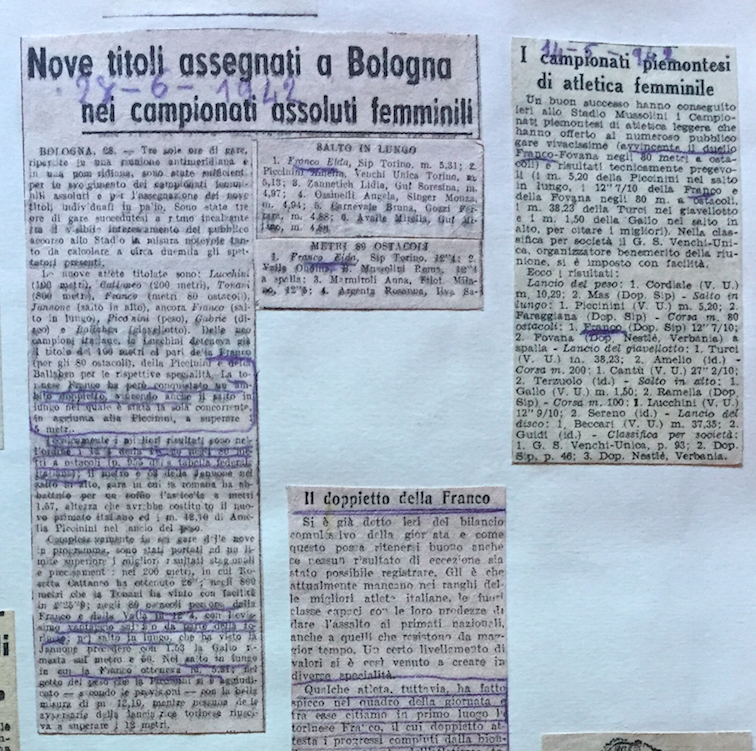
The Black Notebook, p. 9.
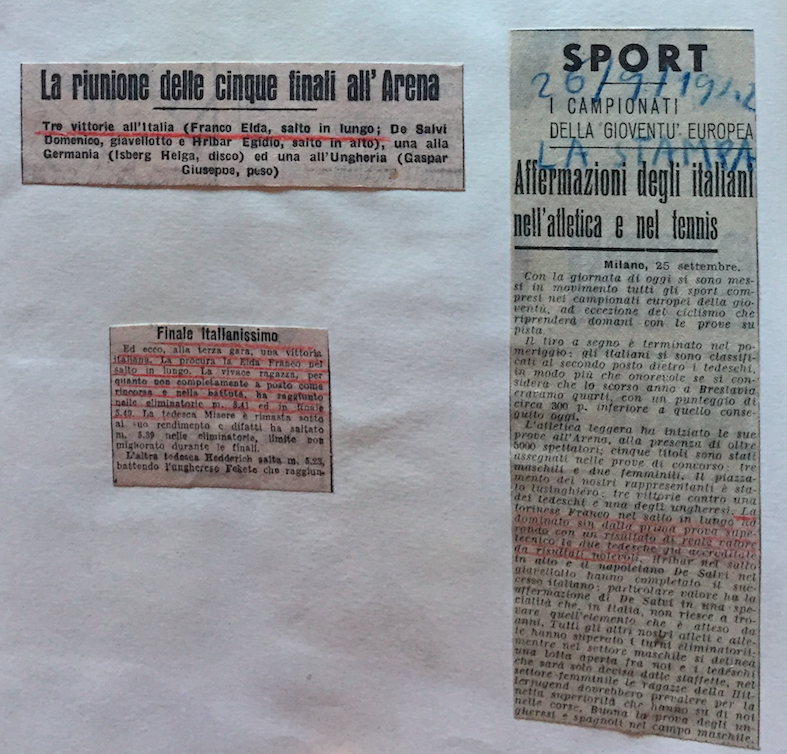
The Black Notebook, p. 12.
The third and fourth items are two photo-albums created by Elda herself when she was older: they contain 64 (Album I) and 59 (Album II) photographs. The combined use of these 4 items can be very useful: for example, the red notebook can help in dating the clippings and the albums may contain high-definition (but undated) versions of the same photographs published in the clippings.
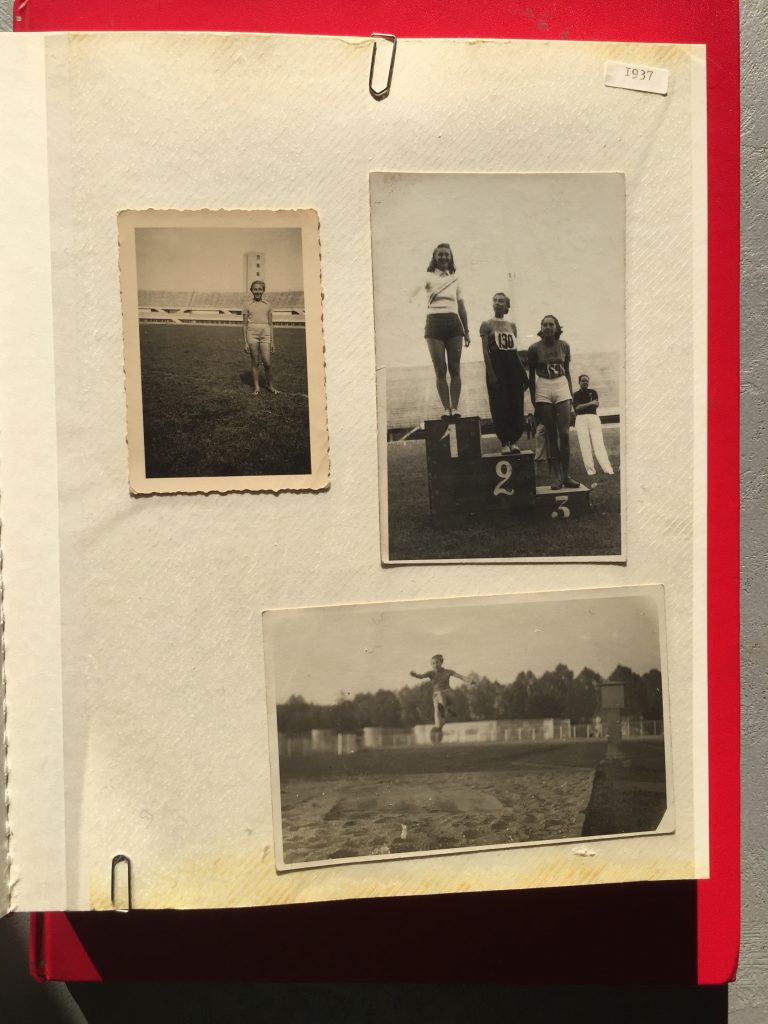
Album I, p. 7. As you can see, a little typewritten label states the date of the picture contained on that page.
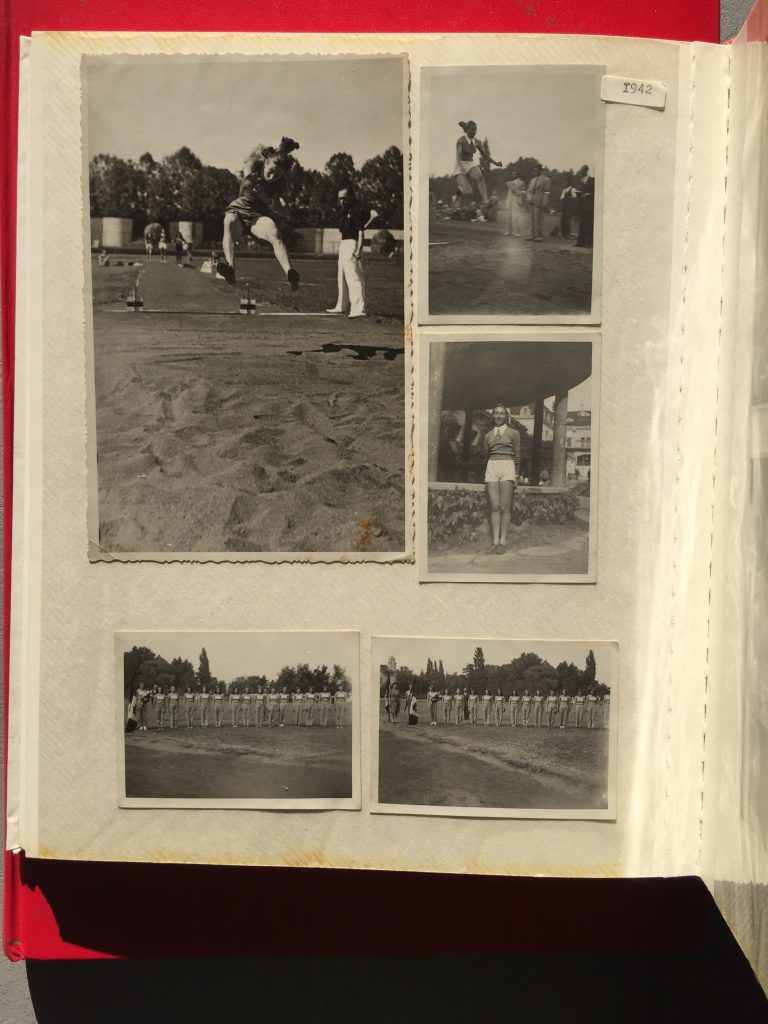
Album I, p. 26. Most of the pages in the albums contain 2 or 3 photographs, but some even more.
The first photos in Album I, date back to 1937, and show a very young Elda in the SIP uniform: since his father worked at this electric company as an electrician, it’s no surprise that his 13-years old daughter began to practice athletics is the company’s dopolavoro (also called Dopolavoro Aziendale SIP, DAS). A trainer taught the girls the basics, such as how to pass the relay baton, which was often run by the younger girls over 75m rather than 100m.
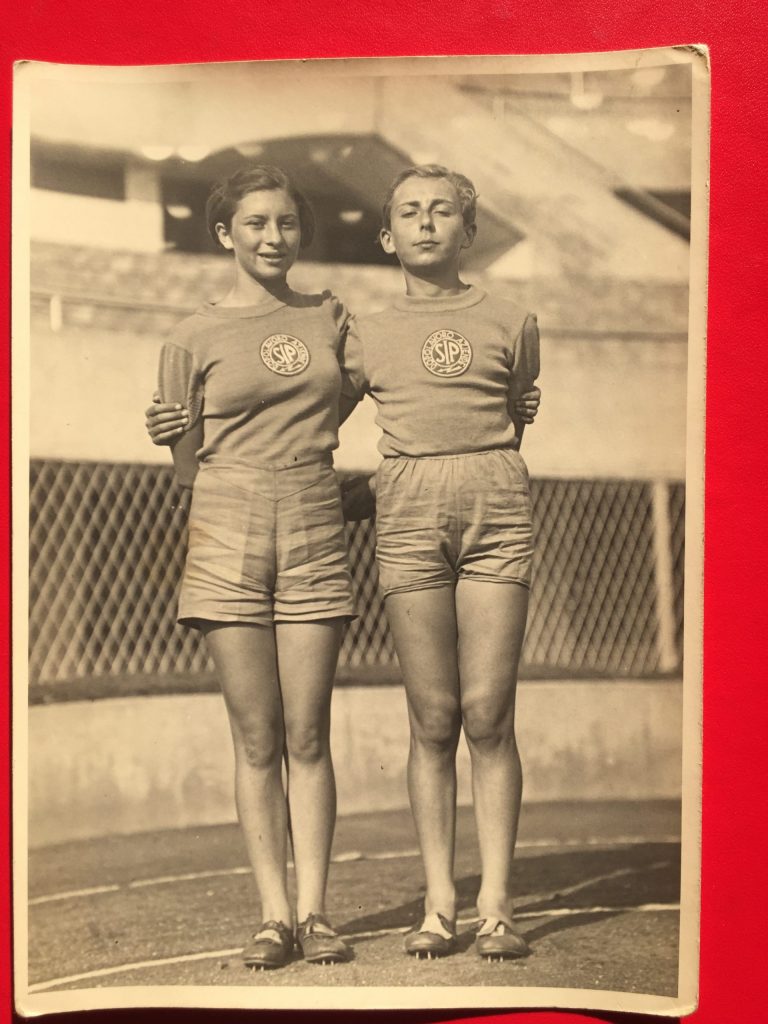
The very first photo in Album I: Elda (on the right) and a SIP mate (1937).
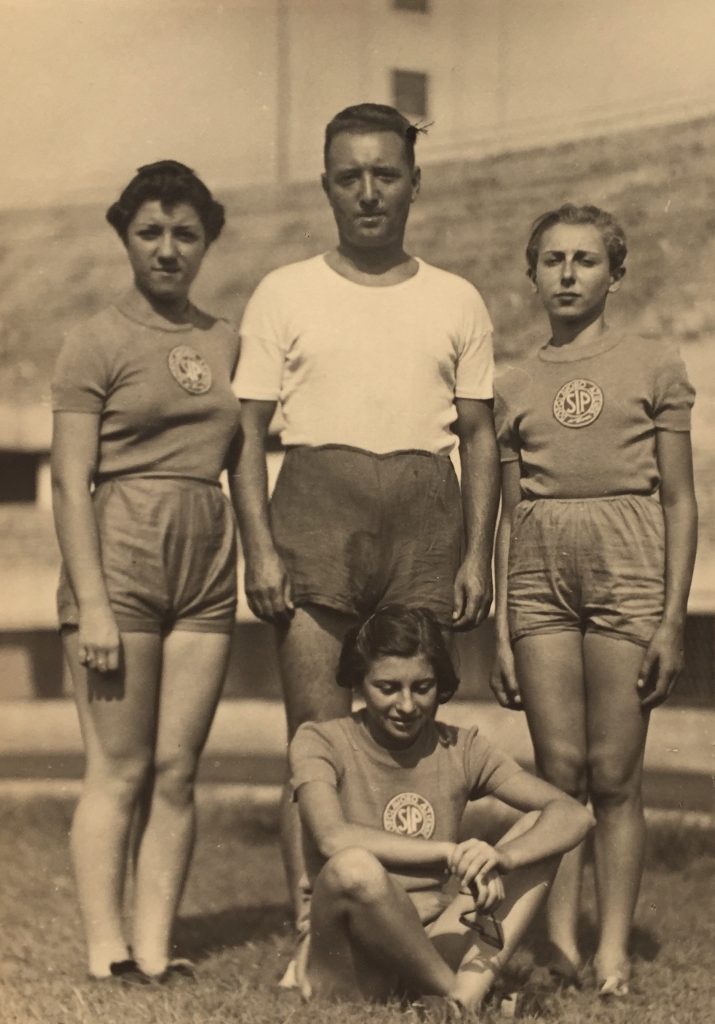
4 SIP athletes and their trainer: Elda is on the right.
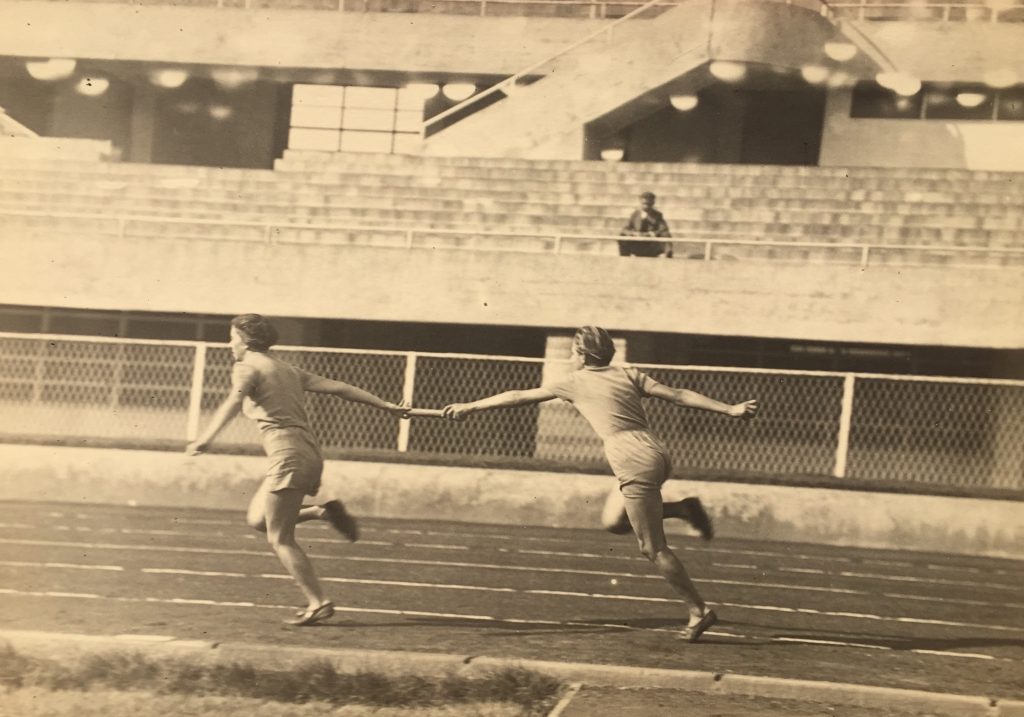
Elda (on the right) practising passing the baton
The reading of the first 3 pages of the red notebook could be very useful to understand how the beginners’ lives could be hard. At the very first competition (October, 4th 1936), Elda was eliminated in the long jump, and the 4x75m SIP relay team was last. After 3 first placings in the second competition in Turin, on April, 25th 1937 Elda went for the first time on a trip outside of Turin: in Alessandria she was eliminated both in 60m race and in long jump.
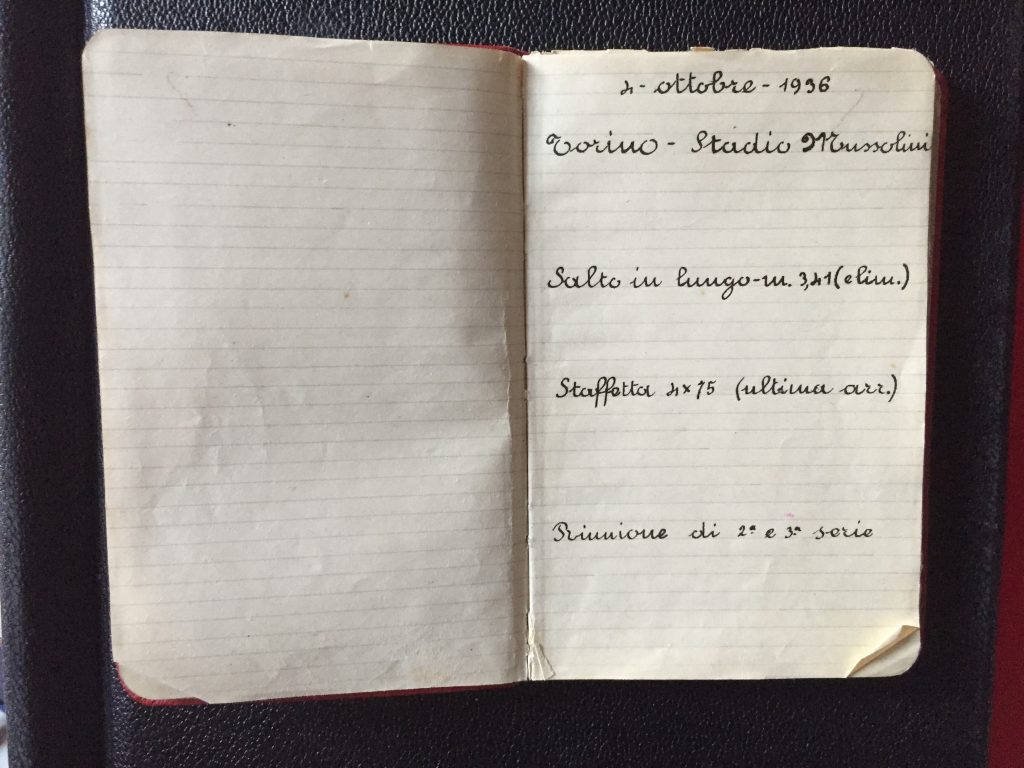
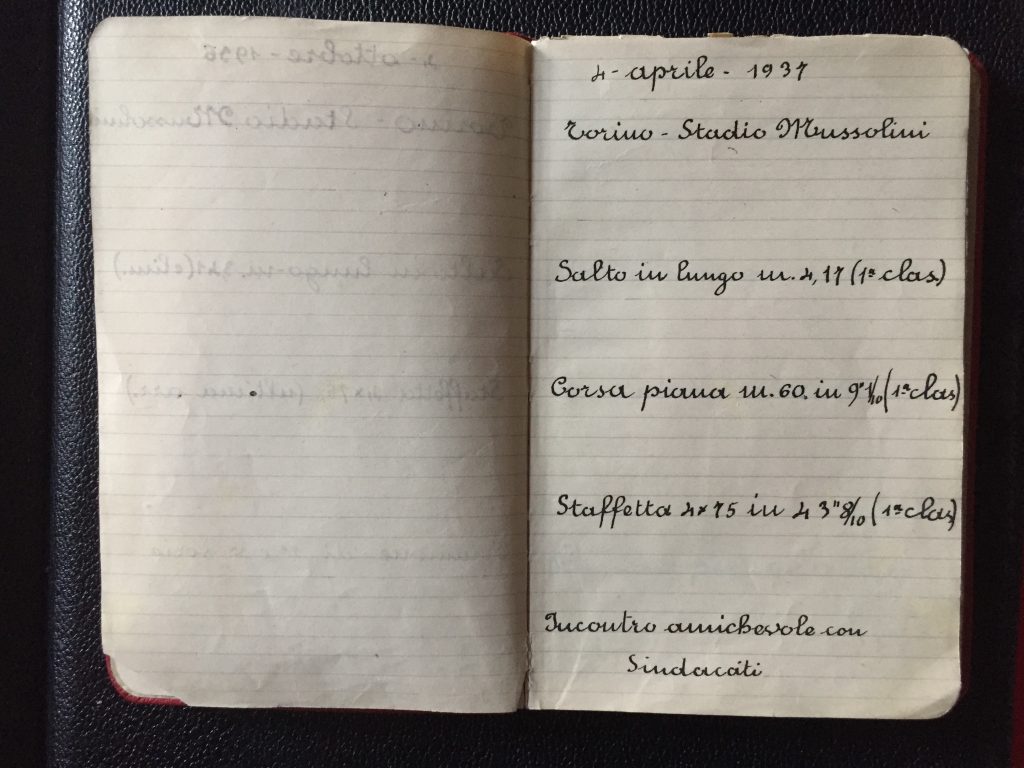
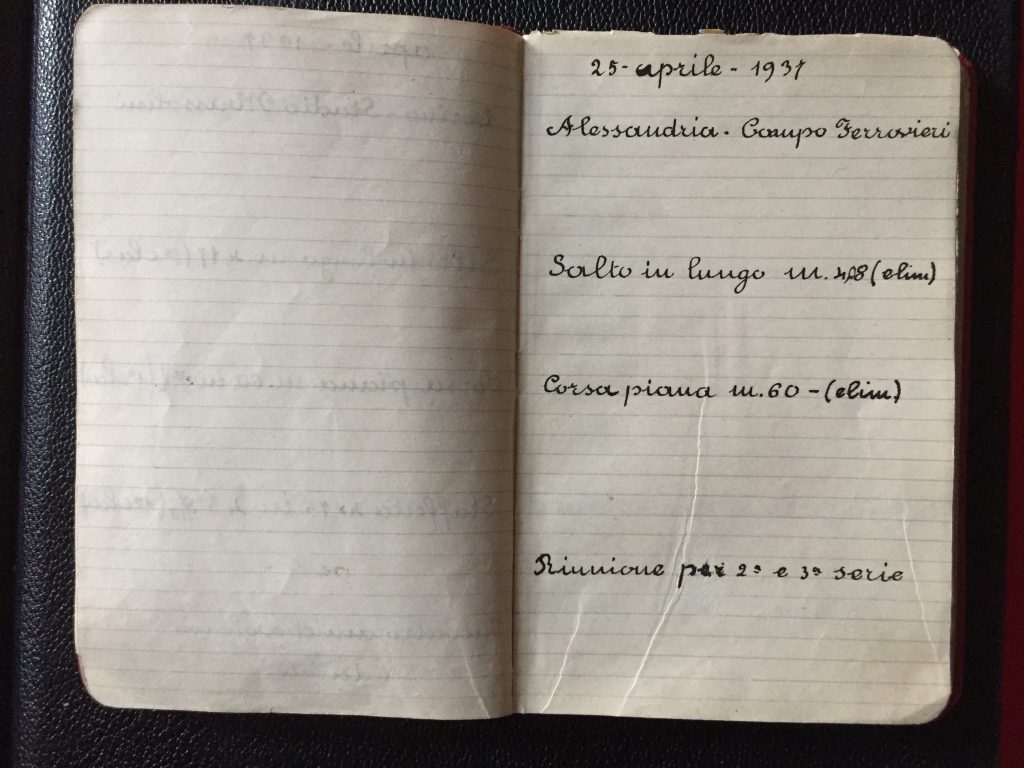
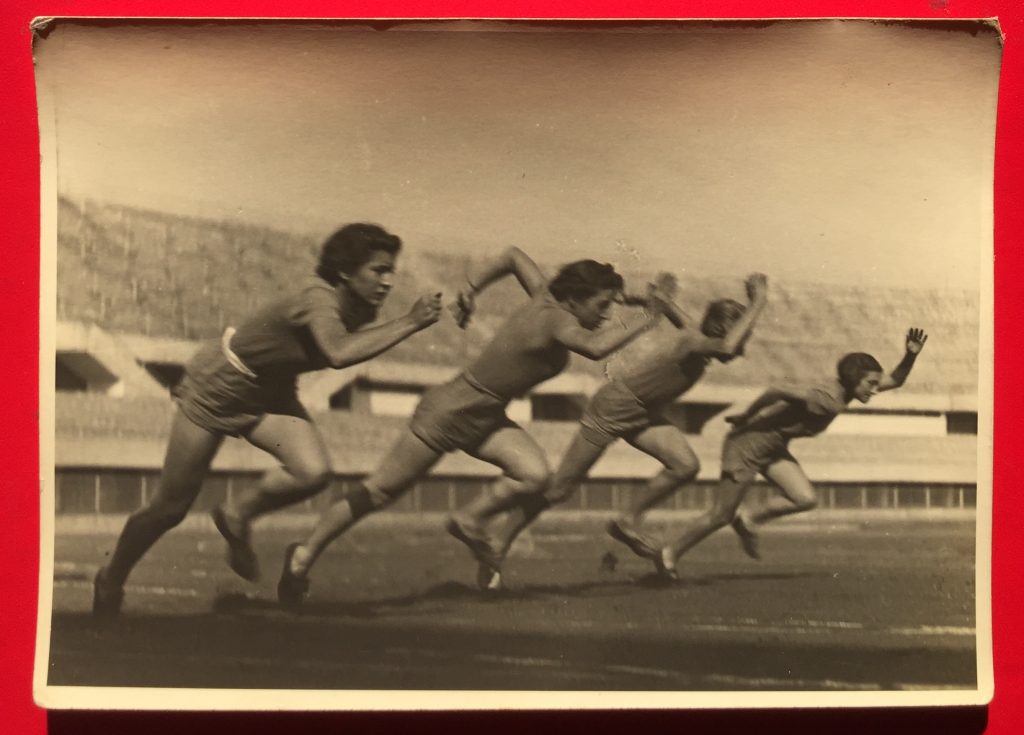
4 SIP runners: Elda is the third (1937).
More than half of these photos were taken at the athletics pitch of Stadio Mussolini (today Stadio Comunale Grande Torino), a modern stadium built by the regime in 1933 (see https://bit.ly/3g2JnBG ): not only because it was the usual place for every athletics event in Piedmont, but also because it was used for international meetings. The Rationalist Torre di Maratona had been witness to the undertakings by Elda and her team mates, even after 1945 …
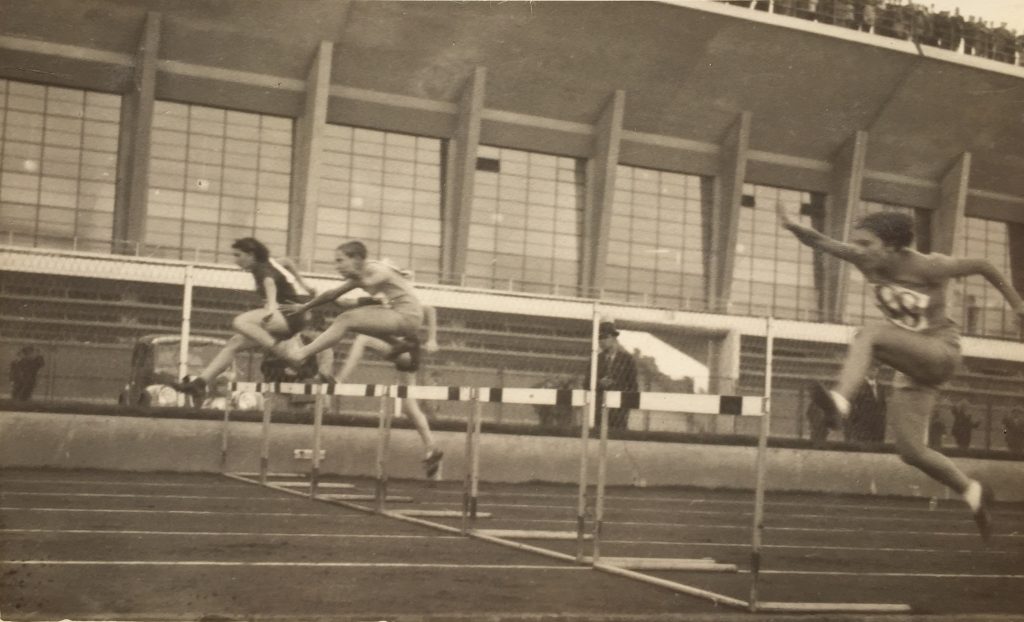
Elda (with short hair and in the lighter kit) during the Trofeo SIP (1937).
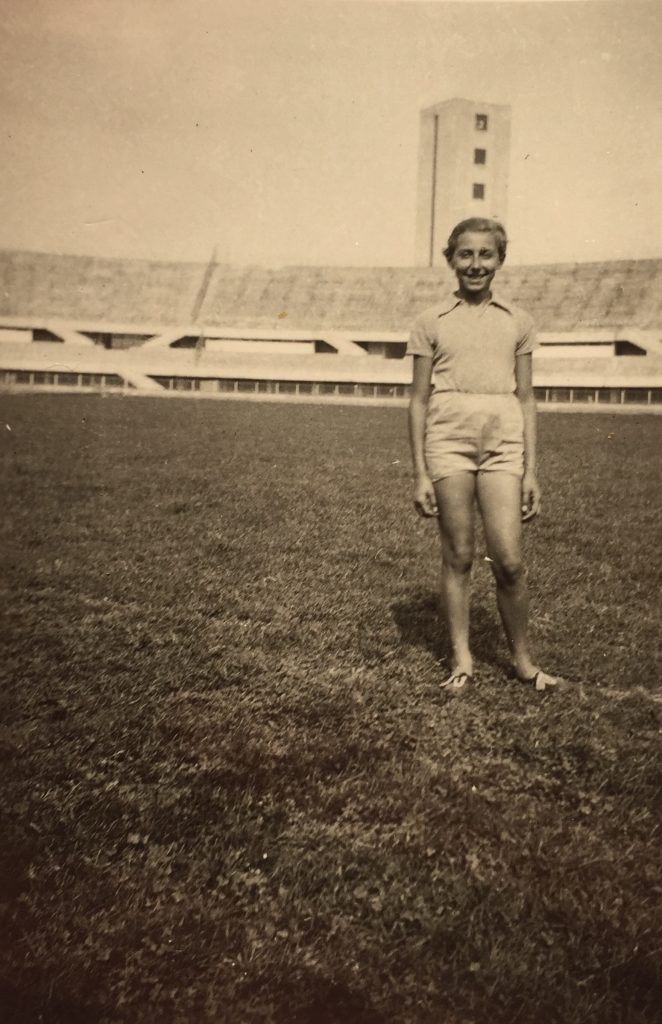
Elda in the Stadio Mussolini (1937): the Torre di Maratona is in the background.
In the first years (1936/1939), Elda was just one among many SIP athletes: after a short debut as a runner (60m and 4x75m relay), she specialized in high and long jump, with some small success.
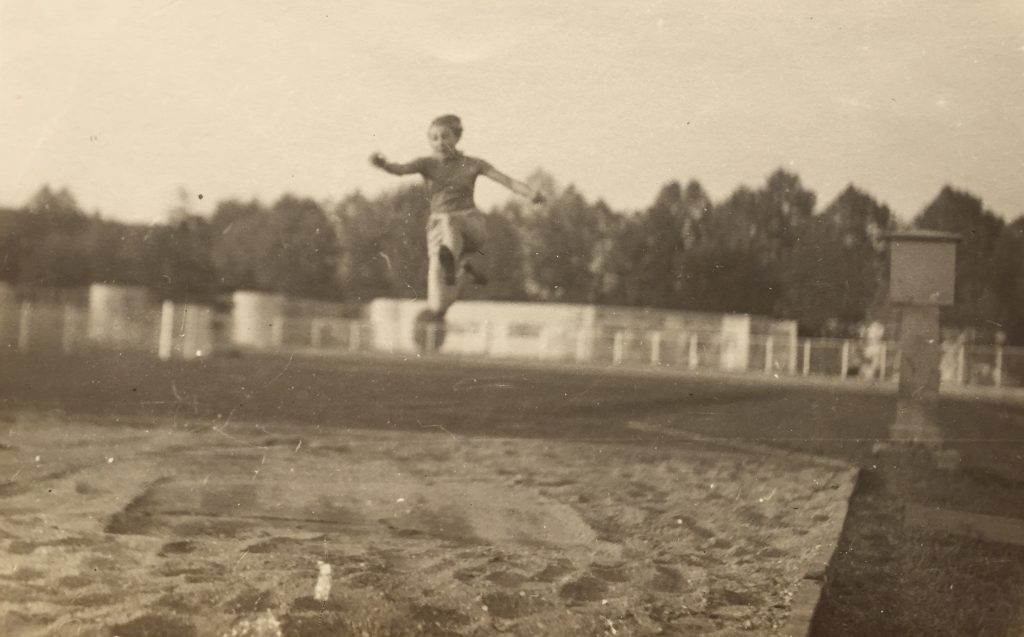
Elda long jumping (1937, or 1938).
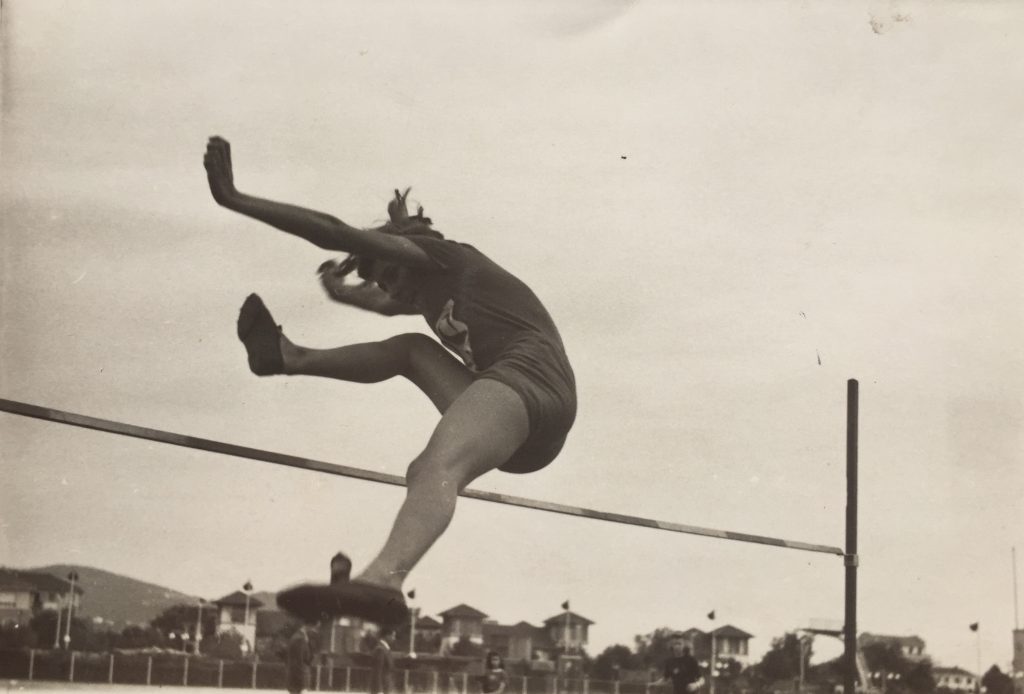
Elda during a high jump (Turin, 01/10/1939).
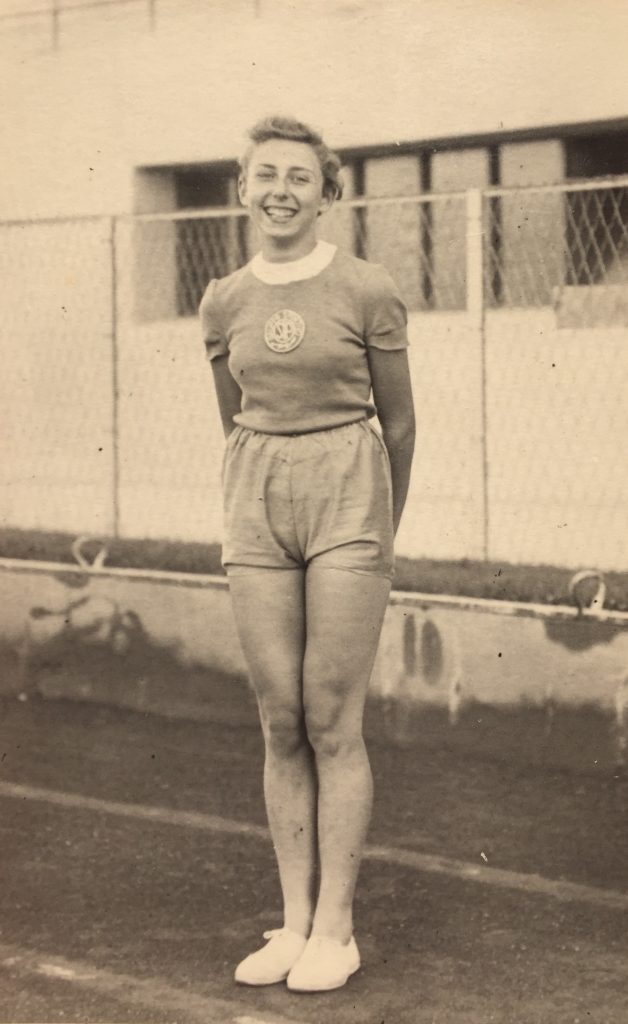
Elda (1939).
The main difference between Elda and the other SIP athletes whose names appear and then disappear from the clippings, is that Elda continued to work hard, slowly emerging in the local scene ruled by the strong GS Venchi Unica opponents …
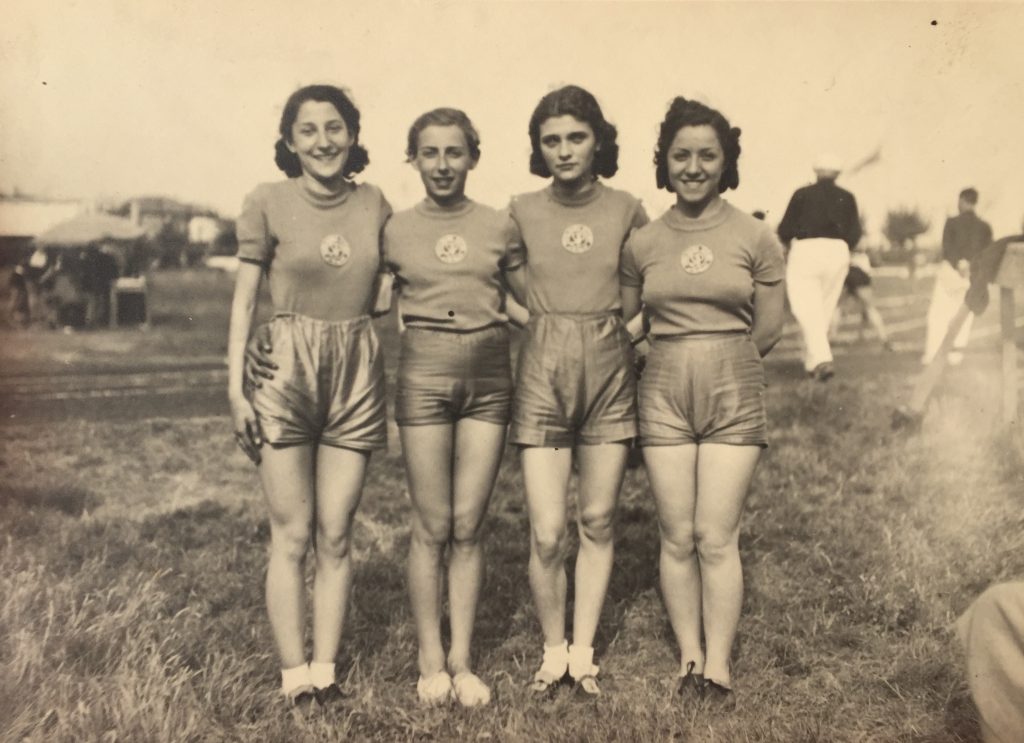
Elda (2nd from the left) and her three SIP team mates in Valenza (1938). They were probably relay team mates.
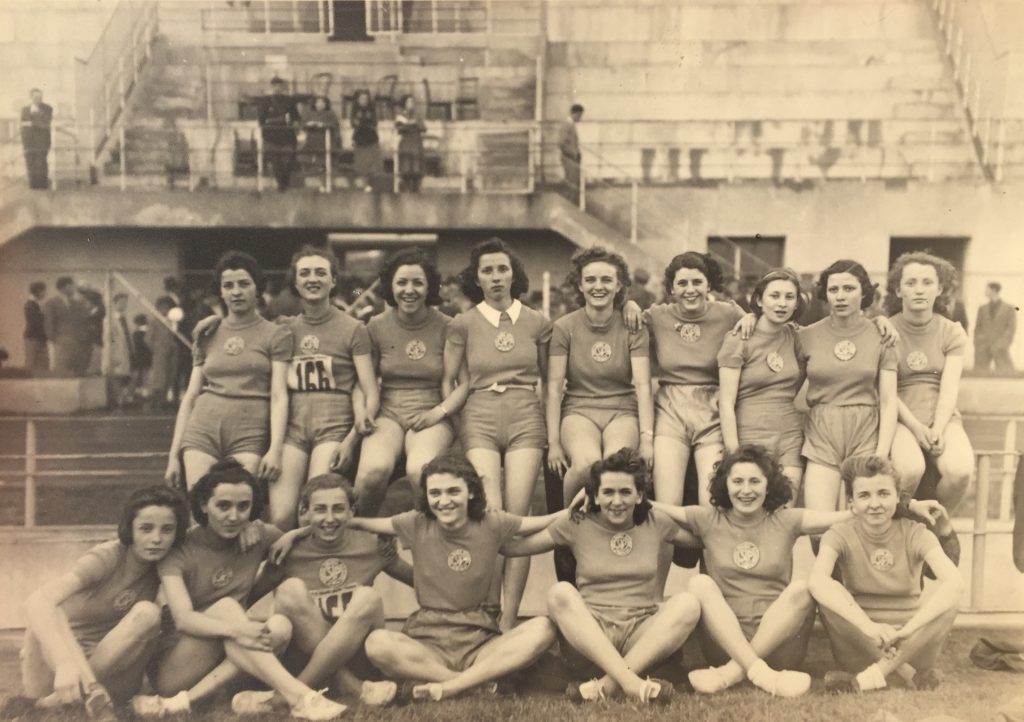
The SIP athletics team (1938?). Elda is the third sitting, from the left.
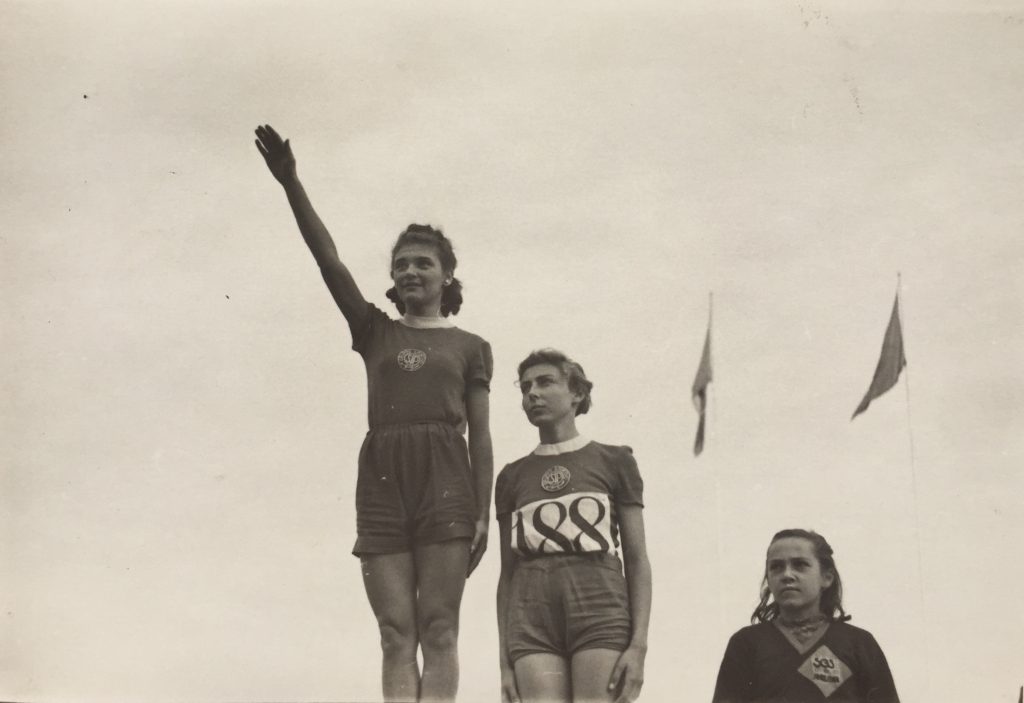
Elda (in 2nd place), during an award ceremony (Turin, 01/10/1939)
The winner, making the ritual Roman salute, is a SIP teammate
the 3rd placed athlete is part of SGS Soresina.
Three very interesting pictures prove that athletics was not the the only sport that DAS allowed the SIP female employees to participate in: on November 12th, 1939, they went out on the streets of Turin riding their bicycles … in a twist of fate, the same vehicle that partisans such as Elda would use, some years later, to help the Resistance!
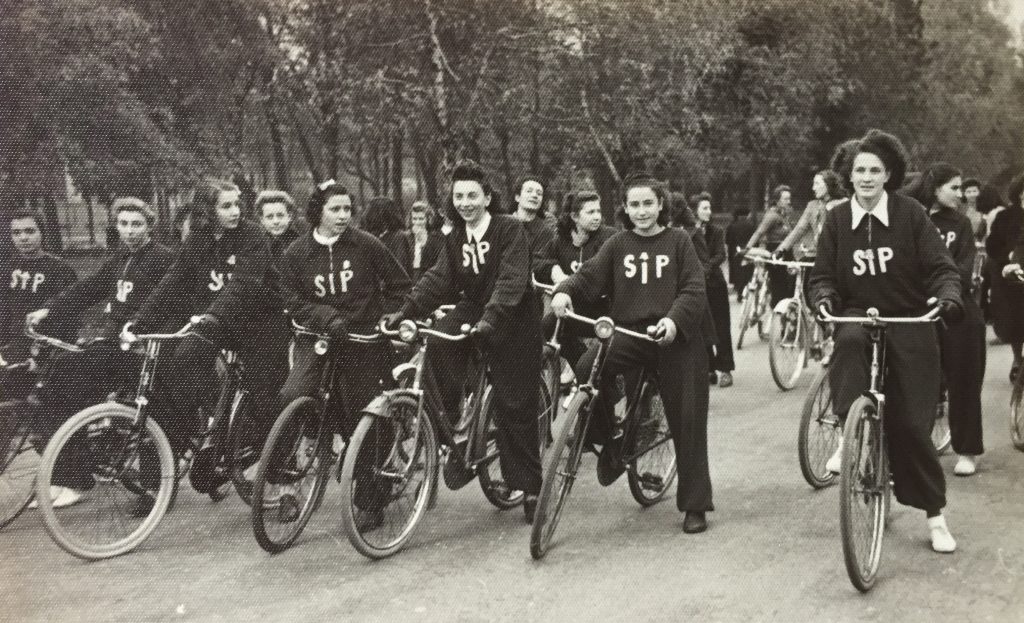
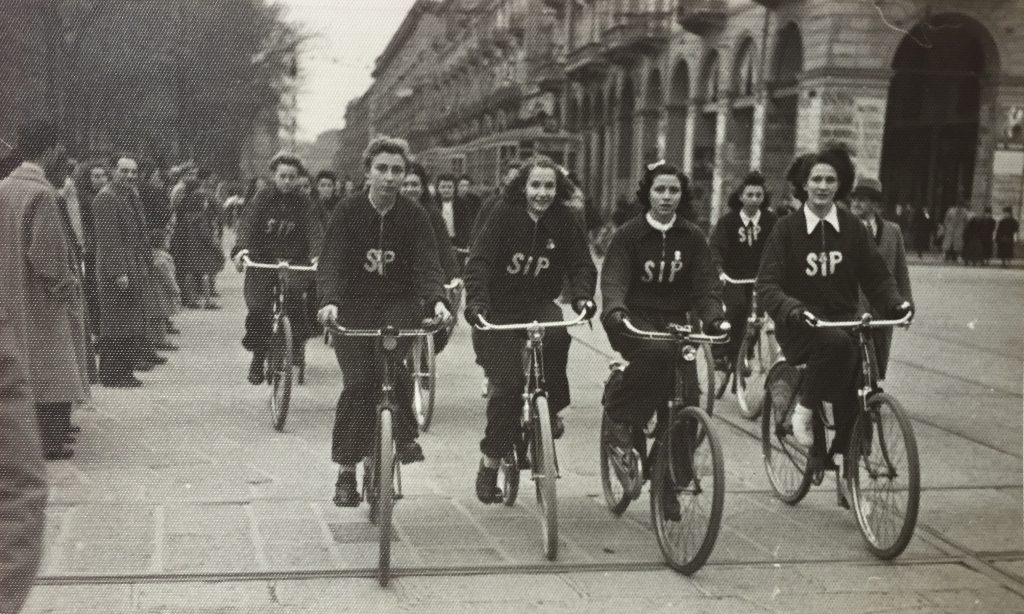
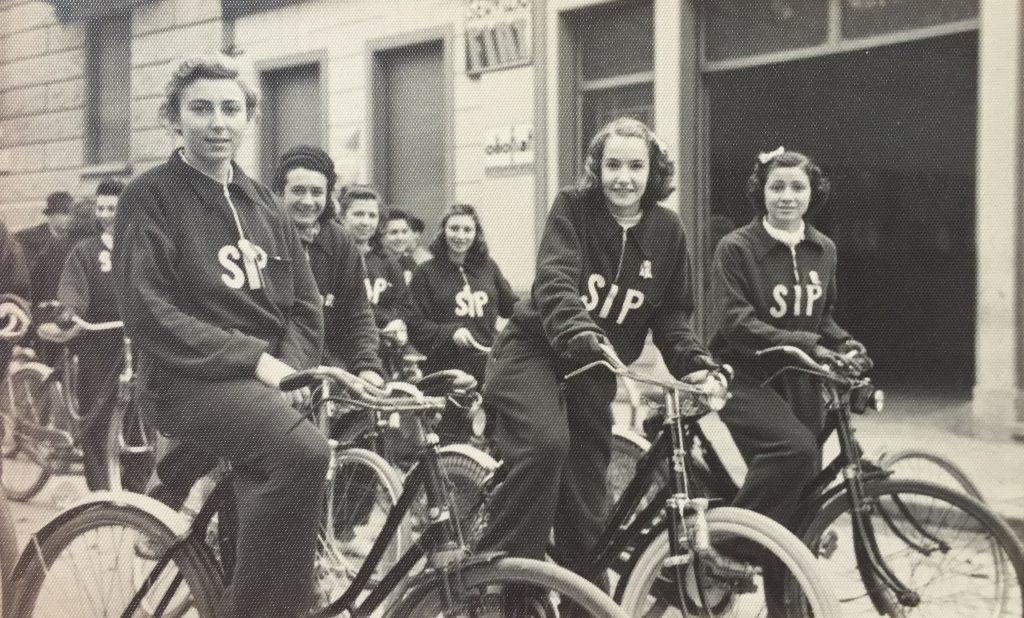
The Red Notebook can give us an idea of Elda’s path. In 1937, her best result in long jump was 4,17 metres; in April 1938, she reached 4,38 m, then 4,59 m in September. In the first 1939 event (a school championship organized by the GIL among the Turinese students) she jumped 4,79 m, reaching 4,99 m in May and even 5,07 in June. But then, when she competed for the first time in the National Championship in Milan, on July, 30th, 1939, she jumped just 4,82 m, classifying 6th.
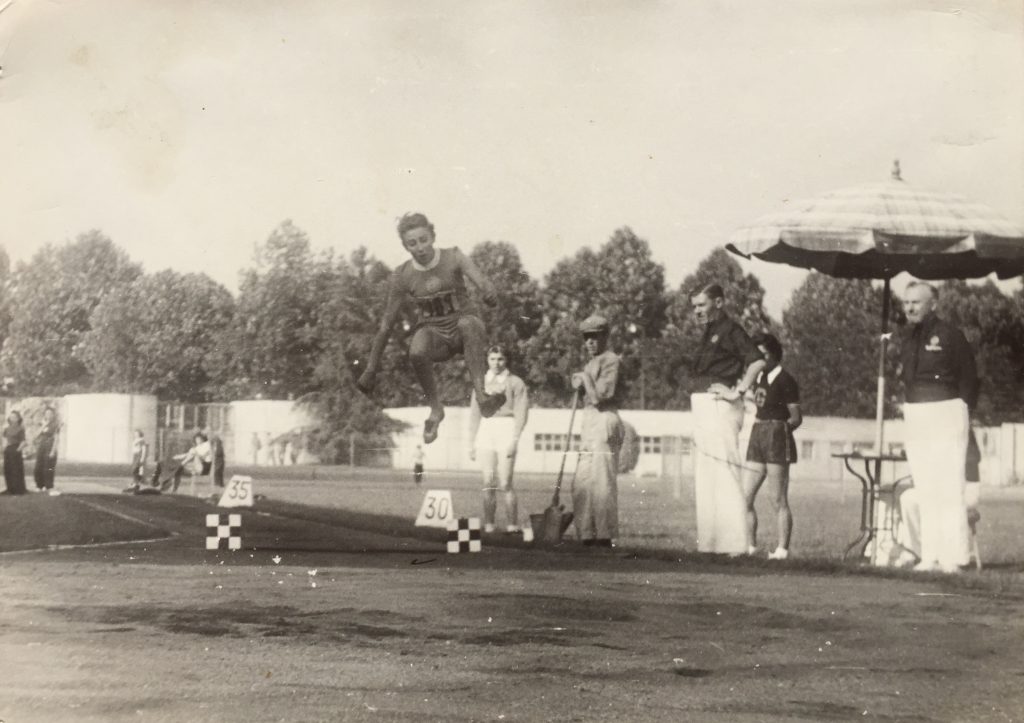
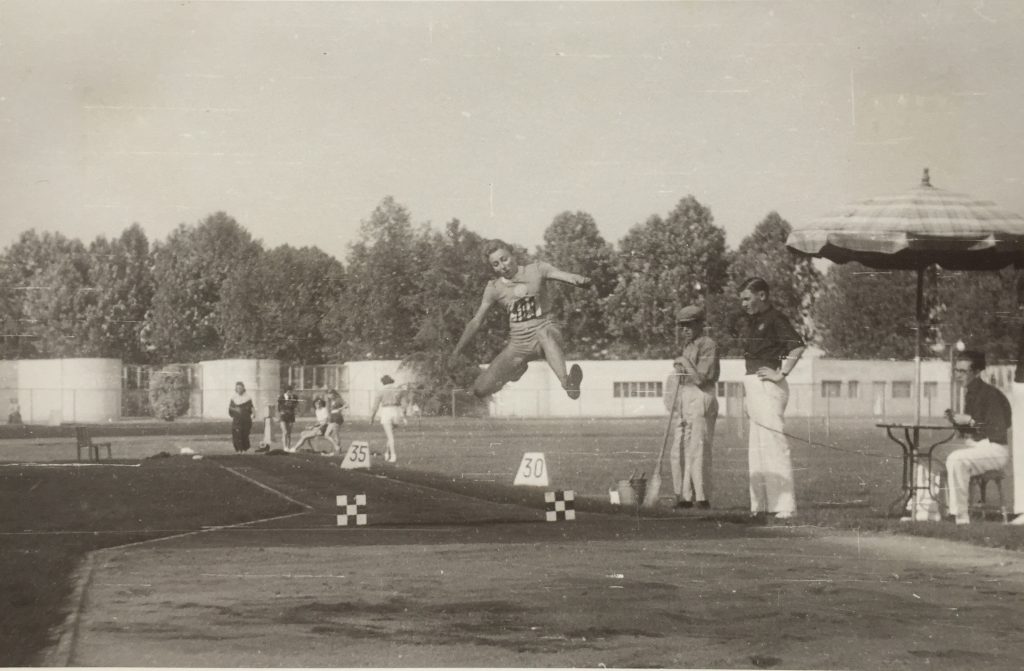
Elda during a long jump event (Turin, 17/09/1939)
The two images are not the same jump, as we can see by noticing the different position of the two athletes (one is Amelia Piccinini) who are watching Elda in the first picture.
Yet high jump was the key to Elda’s success in Milan. For the second time during that year, Elda she jumped 1,45m just like her opponent Spaggiari, who won a silver medal on countback.
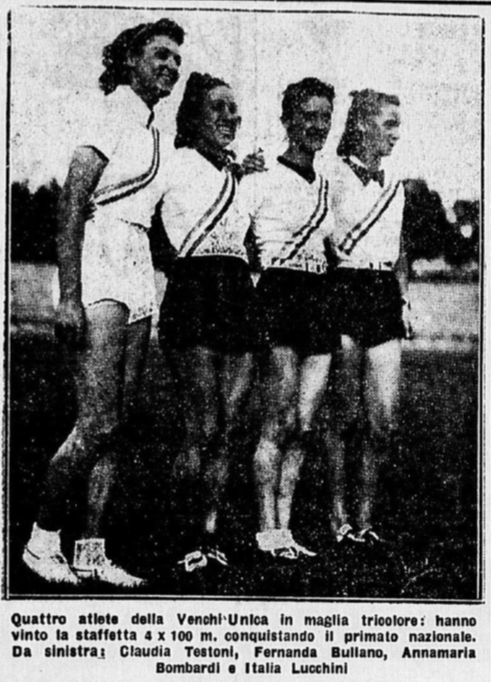
The GS Venchi Unica Torino 4x100m relay team that won the 1939 National Championship in Milano
Claudia Testoni, Fernanda Bullano, Annamaria Bombardi, Italia Lucchini
Source: La Gazzetta dello Sport, 31/07/1939, p. 3
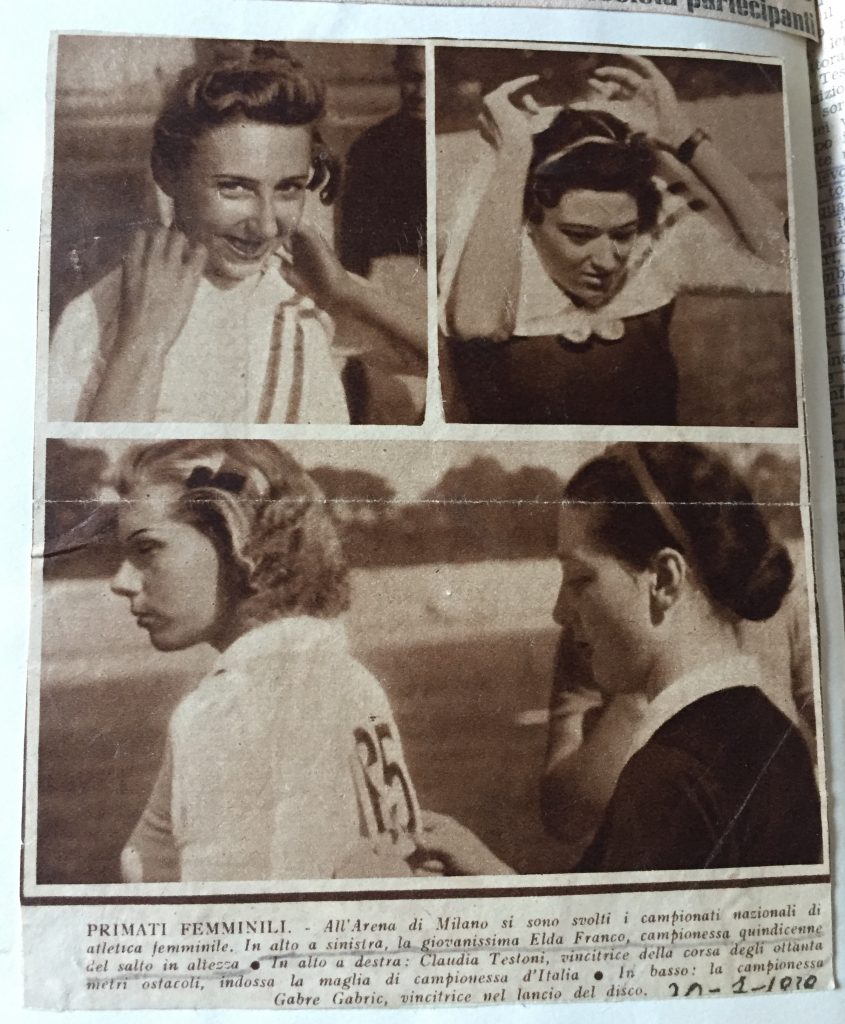
In this clipping from the Black Book, notice the difference between the already famous athletes Claudia Testoni and Gabre Gabric (in 1939, the first had broken the 80m hurdles World record, the second the Italian discus record) and the 15-years old Elda, who smiles like a little girl for her first national title!
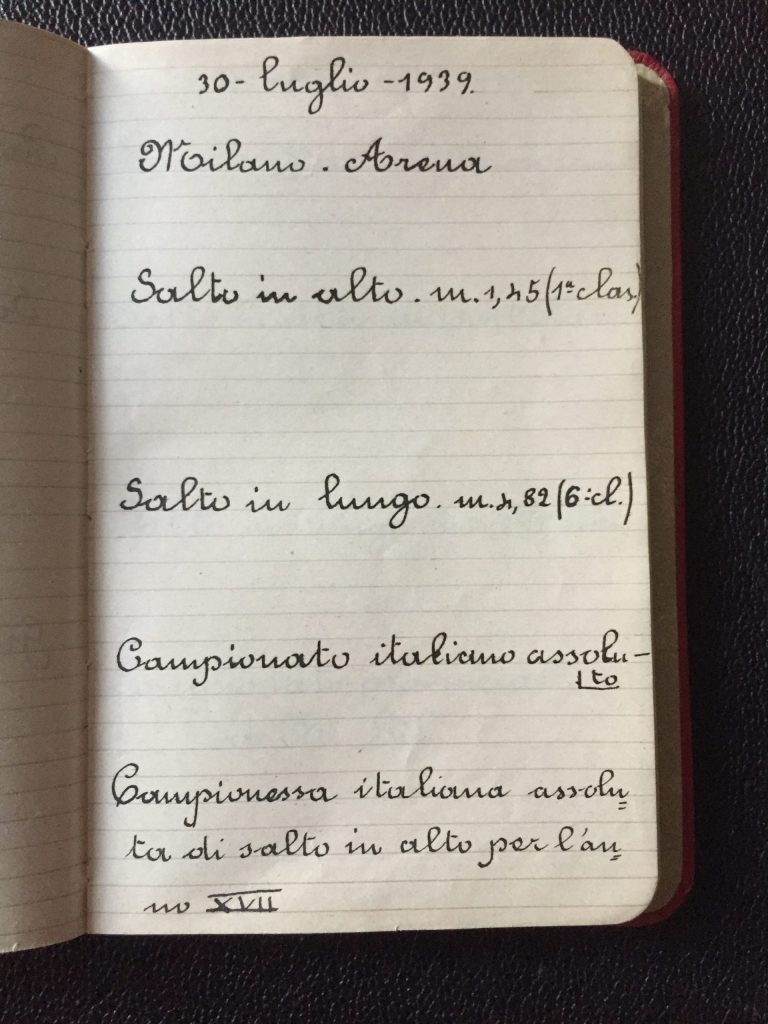
The 1939 National title in the Red Notebook.
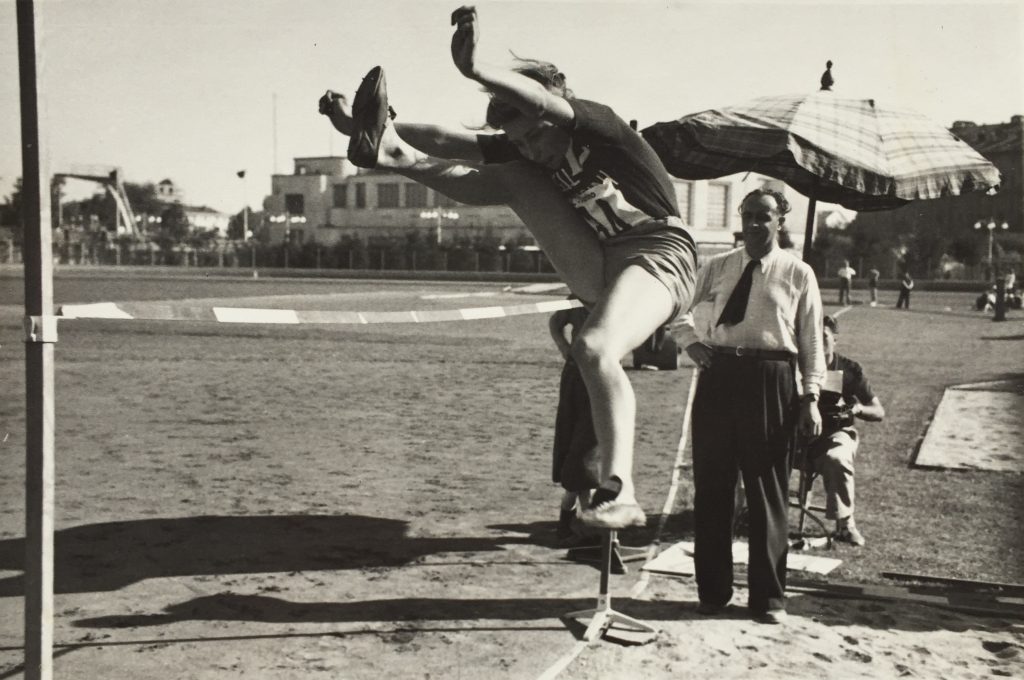
Elda during a high jump event (Turin, 10/09/1939)
Here she is wearing the GIL uniform, not the SIP one.
Article © of Marco Giani
To read Part 5 Click HERE
Further Reading
For the complete digital edition of all Elda Franco’s picture preserved in her two photo-albums, see:
https://sorelleboccalini.wordpress.com/le-fonti_elda-franco_i-due-album-fotografici/
For all the clippings preserved in Elda Franco’s personal archive, see:
For more resources about Elda Franco’s personal archive, see:
For Italian sources about the carriers of Lydia Bongiovanni and Elda Franco, see:

